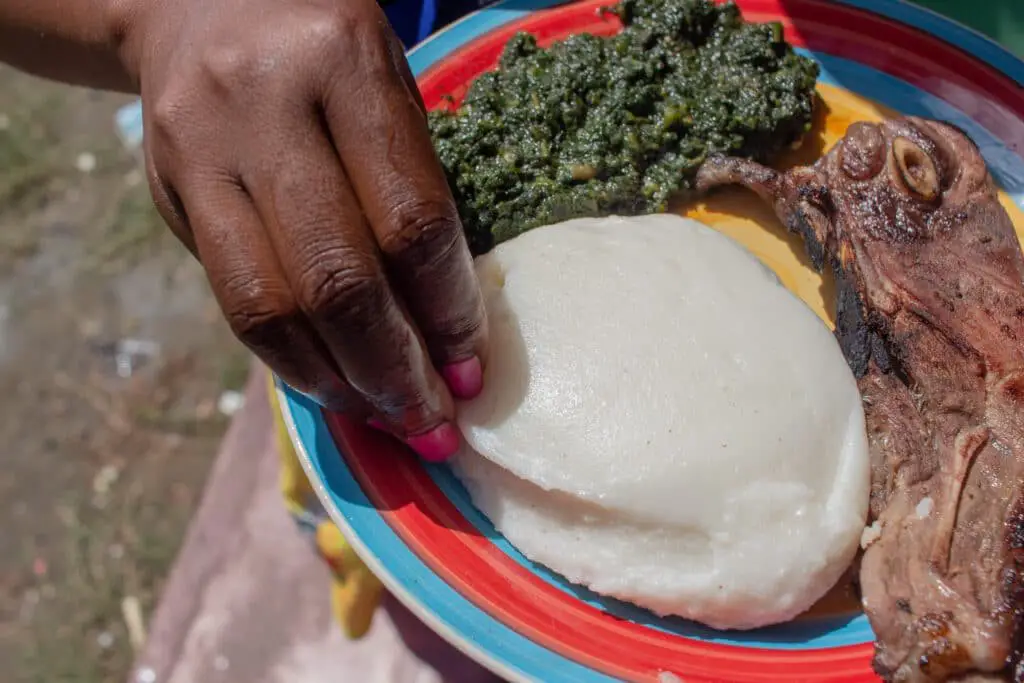Take Me to the Recipes
Burkina Faso, a landlocked gem nestled in the heart of West Africa, boasts a cuisine as rich and vibrant as its history. Nestled in the heart of West Africa, Burkina Faso boasts a culinary heritage as vibrant and varied as its landscapes.
Influenced by its geographical tapestry of savannas, plateaus, and semi-arid plains, Burkina Faso’s food culture is a delicious exploration of locally sourced ingredients and time-tested traditions. From the savannas of the Sahel to the bustling markets of Ouagadougou, each ingredient carries the imprint of the country’s history, geography, and climate.
Buckle up for a culinary adventure where scorching Saharan winds inform the use of drought-resistant grains, and French colonial influences mingle with indigenous cooking techniques. Let’s delve into the heart of Burkina Faso’s flavorful soul, where every dish tells a story of resilience, cultural heritage, and the ingenuity of its people.
Take Me to the Recipes
Here are 10 takeaways from an article about how history, geography, and climate have influenced the cuisine of Burkina Faso:
- Staple Foods: Burkinabé cuisine is based on staple foods such as sorghum, millet, rice, fonio, maize, peanuts, potatoes, beans, yams, and okra. These grains form the foundation of many traditional dishes.
- Commonly Eaten Grains: Rice, maize, and millet are the most commonly consumed grains in Burkina Faso.
- Grilled Meat: Grilled meat is a popular choice, including varieties like mutton, goat, beef, and fish.
- Vegetables: Vegetables play a significant role in Burkinabé cuisine. Some commonly used vegetables include yams, potatoes, okra, tomatoes, zucchini, carrots, leeks, onions, beets, pumpkins, cucumbers, cabbage, sorrel, and spinach.
- Rural Meals: In rural areas, meals often consist of Tô, a sauce made from corchorus or baobab leaves, along with the calyx from Bombax costatum, dried fish, and spices like chili and soumbala1.
- Tô: Tô is a traditional dish made from ground millet, sorghum, or corn. It is served with a vegetable sauce and sometimes accompanied by meat like mutton or goat.
- French Influence: French green beans and dishes like Ragout d’Igname (a yam stew) and Riz gras (rice cooked with onions, tomatoes, and meat) reflect the historical influence of French colonization.
- Foreign Influences: Burkinabé restaurants often serve dishes from neighboring countries. Examples include kédjénou (a fish or meat stew from Côte d’Ivoire) and poulet yassa (a Senegalese chicken stew with lemon and onions)1.
- Beverages: Traditional Burkinabé beverages include Bissap (made from Roselle flowers), Degue (made from pearl millet and yogurt), and Dôlo (a beer made from pearl millet or sorghum)1.
- Climate Impact: The hot, dry climate of Burkina Faso influences food choices. Dishes are designed to provide sustenance and hydration in challenging weather conditions.
Remember that Burkinabé cuisine is rich in cultural heritage and reflects the country’s history, climate, and local ingredients.
Where is Burkina Faso?

Burkina Faso is Located in Western Africa, Ot shares over 3000 km of border with six countries: Benin, Cote d’Ivoire, Ghana, Mali, Niger, and Togo.

Index to the Contents
- Take Me to the Recipes
- More Articles for Your Pleasure
- 10 Fascinating Facts about Burkina Faso
- Burkina Faso’s History and the Effect it has had on the Cuisine.
- How Burkina Faso’s Climate and Geography Influences Food
- Understanding the Essence of Burkina Faso food Recipes
- Traditional Burkina Faso food
- Burkina Faso’s National Dish
- The Most Popular Burkina Faso Recipes
- Exploring Burkina Faso Street Food
- Exploring Burkina Faso Ingredients: The Flavors of Burkina Faso‘s Cuisine
- What are the Health Implications of Burkina Faso Cuisine?
- Burkina Faso food Recipes to Try at Home
- Conclusion
- Frequently Asked Questions
More Articles for Your Pleasure
- North and South American Cuisine – A Culinary Expedition
- European Cuisine: Savor the Continent’s Best Culinary Secrets!
- African Cuisine: Discover the Bold Flavors & Global Charm!
- Asian Cuisine Unlock its Secrets – Taste, Health & Global Influence!
- Oceania Cooking: A Culinary Journey Through the Pacific
- Caribbean Cuisine: Beyond Jerk Chicken
- Middle Eastern Food: A Flavor Journey
Savor iconic Burkina Faso’s Dishes – Click on each tantalizing picture to open up the Recipe
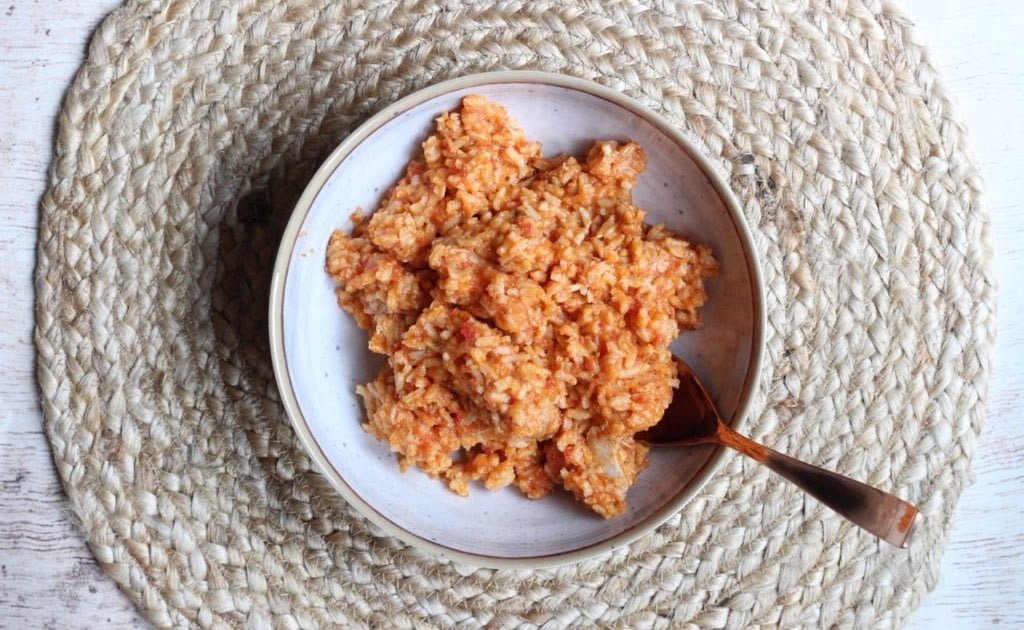
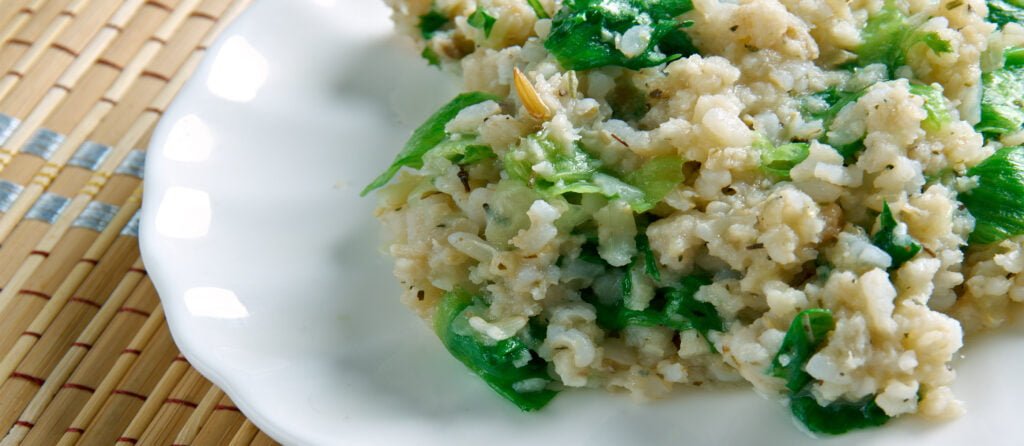
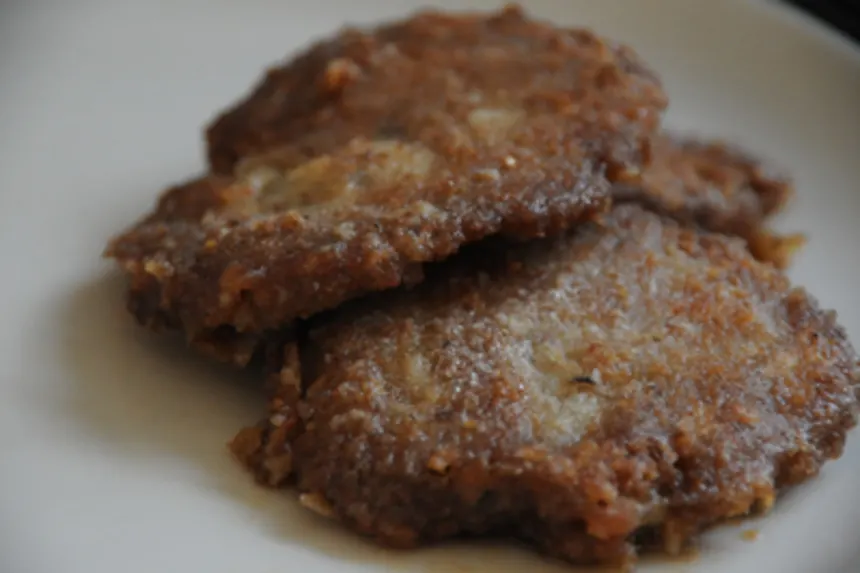
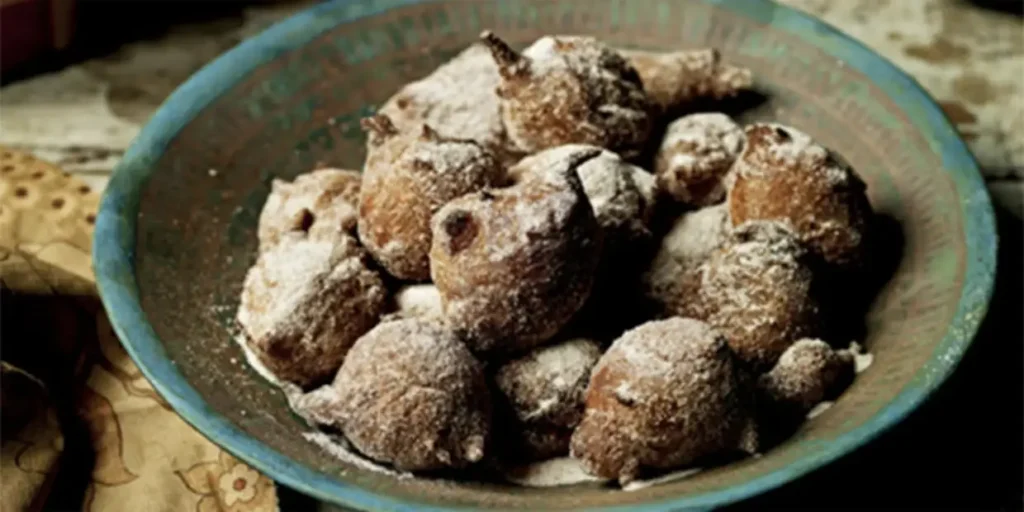

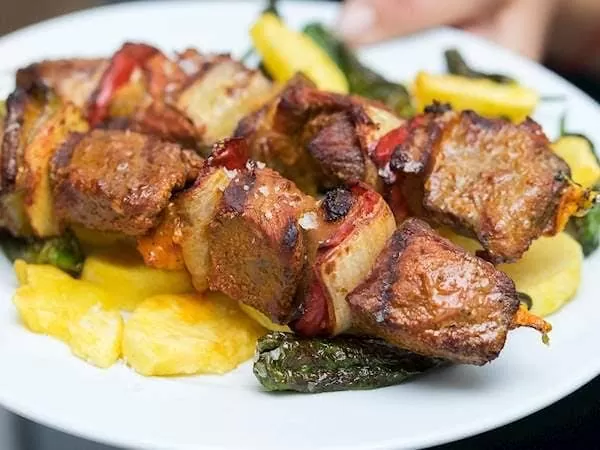
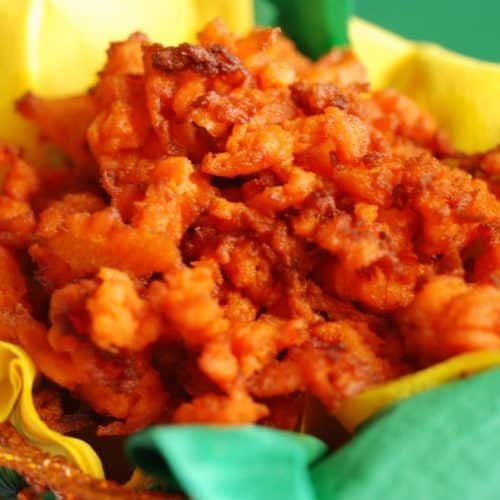
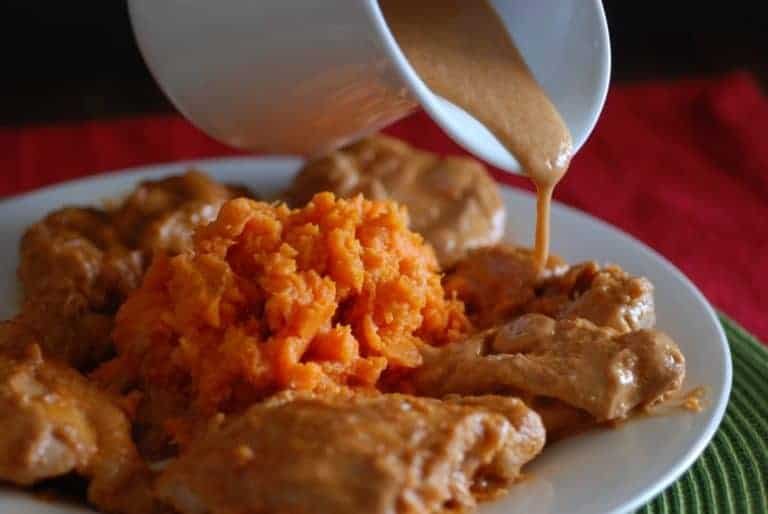
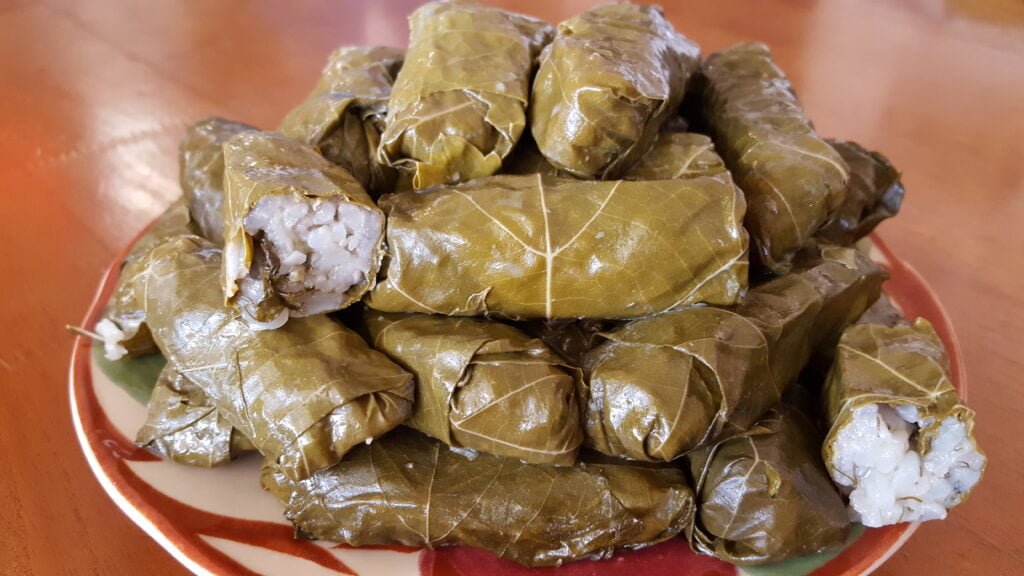
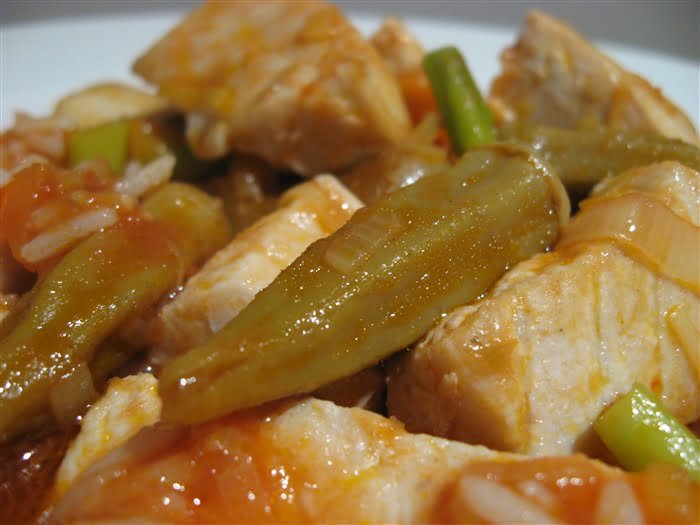
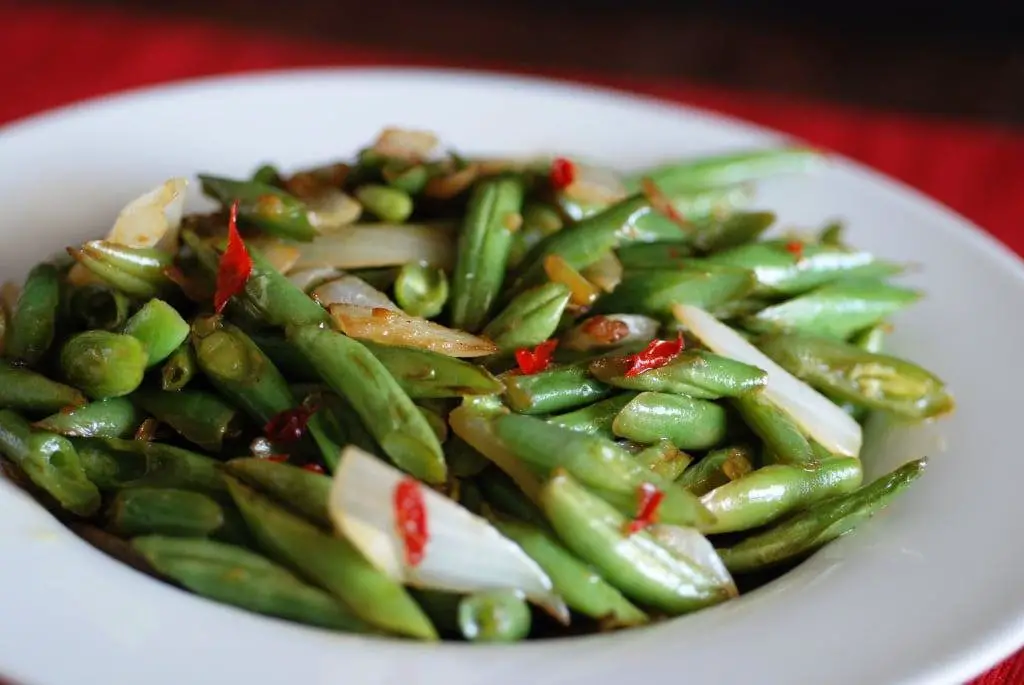

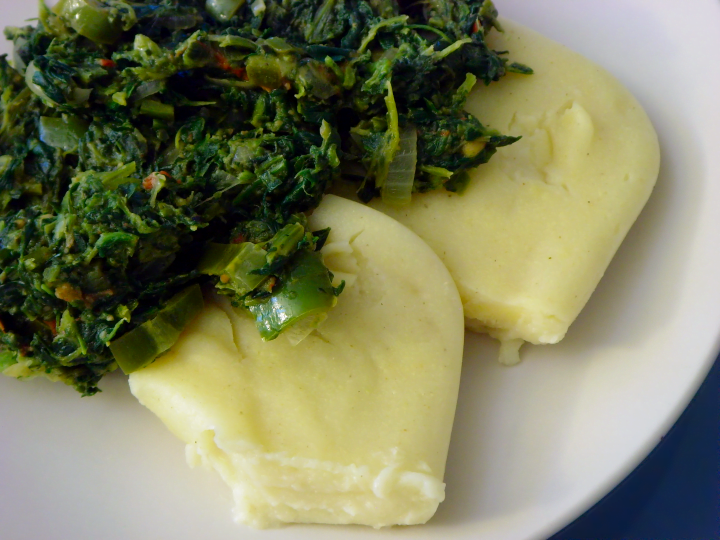
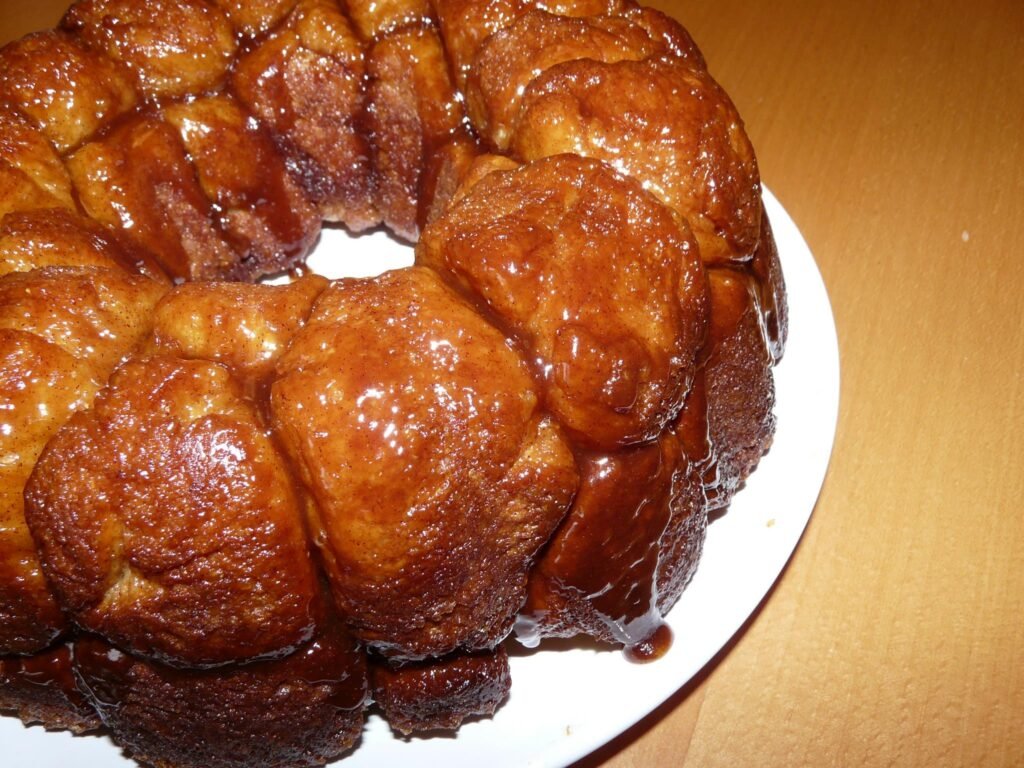
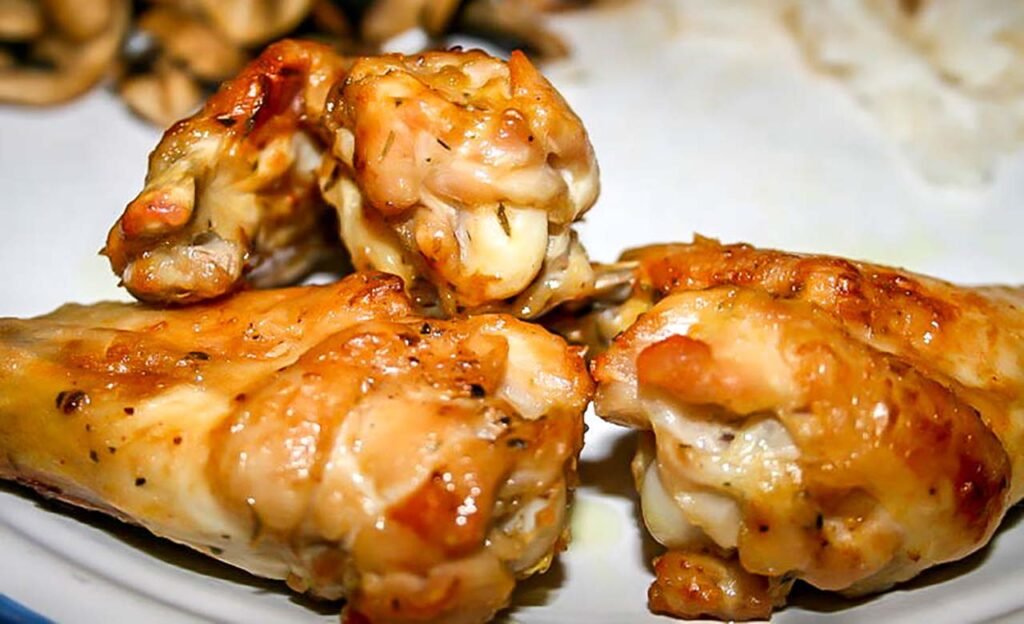
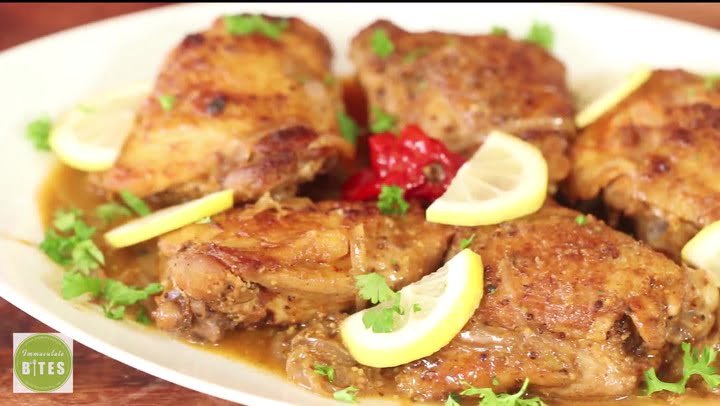
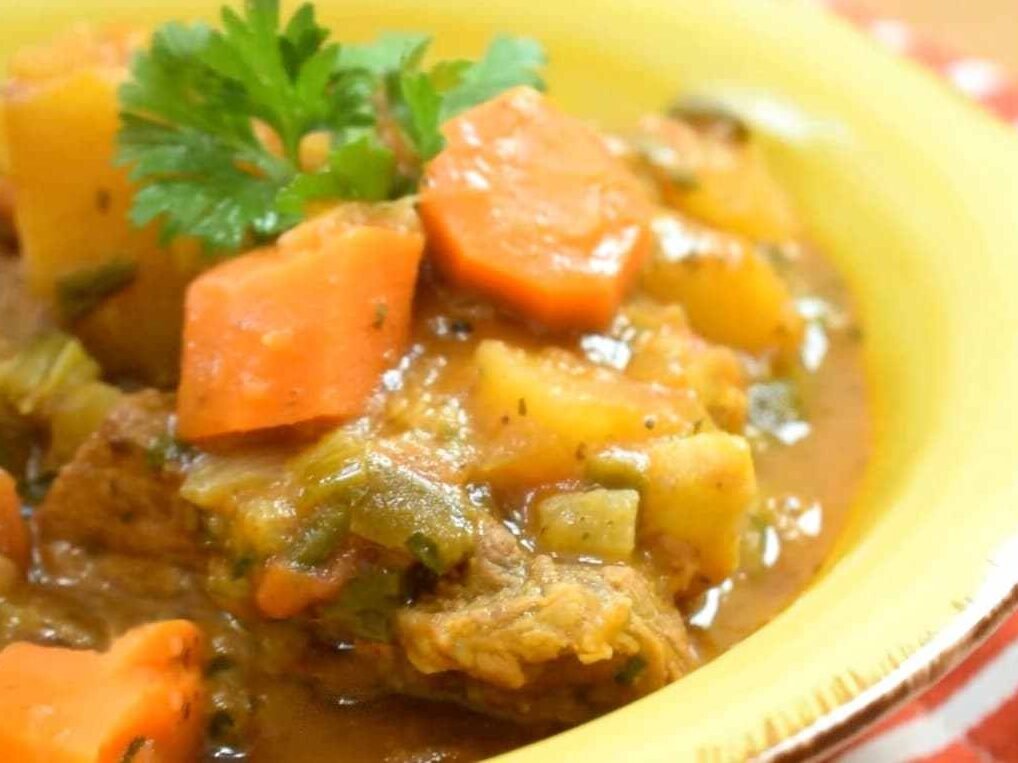
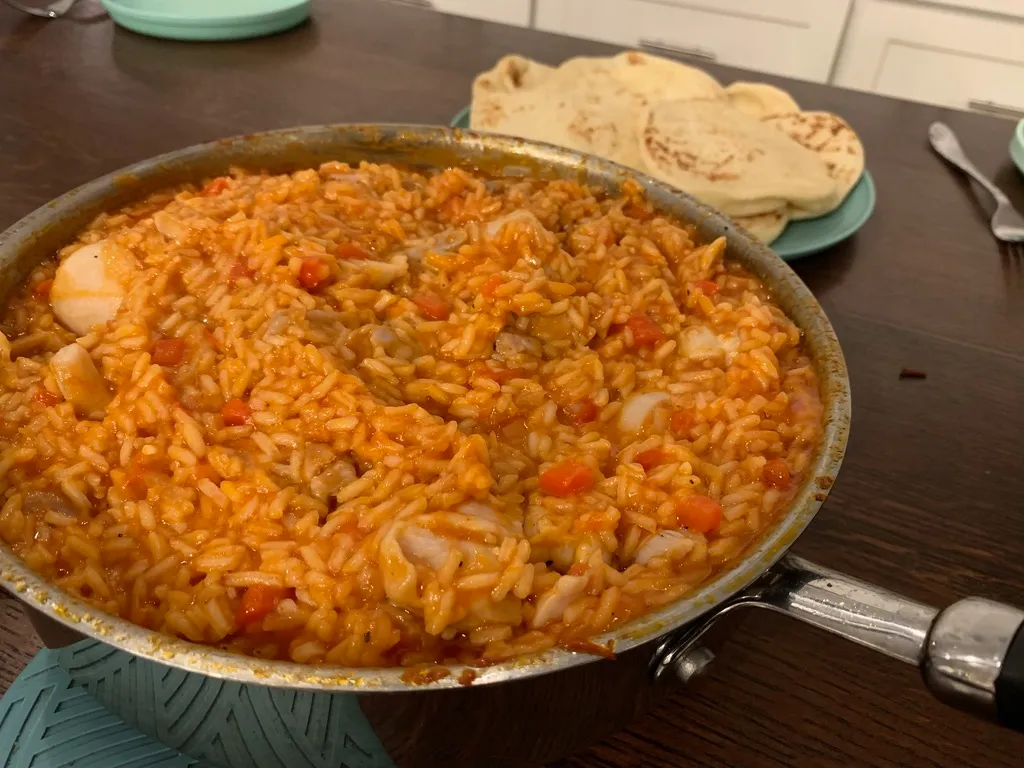


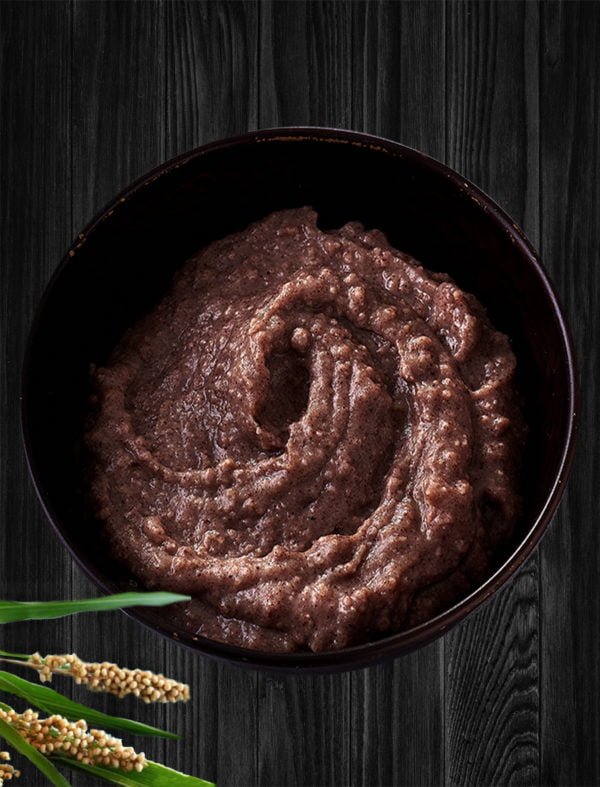

10 Fascinating Facts about Burkina Faso
Discover Burkina Faso: 10 Intriguing Laws, Facts, and Quirks That Will Surprise You!
Land of Upright Men
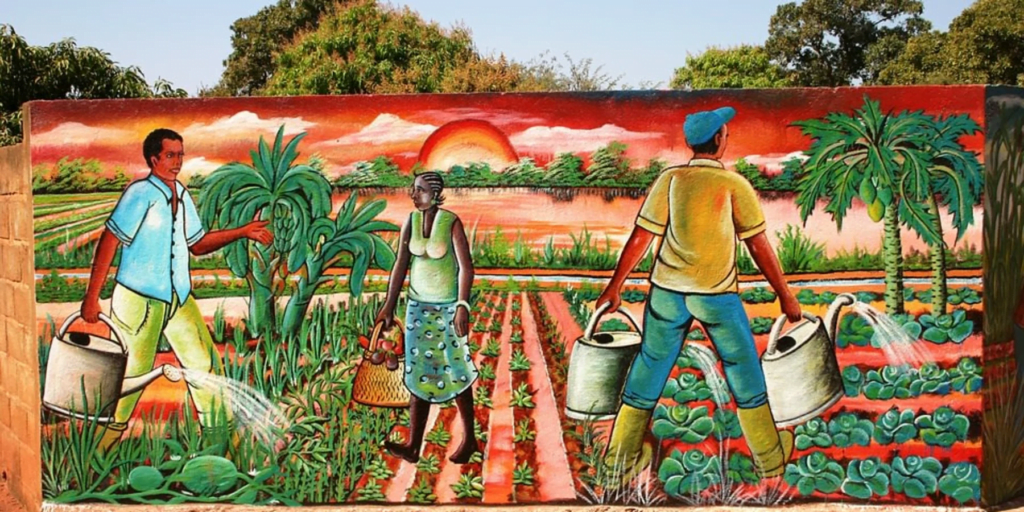
Burkina Faso translates to “Land of Honest Men,” reflecting the country’s commitment to integrity and dignity.
Folklore and Legends
Burkina Faso is steeped in folklore, with traditional beliefs still deeply rooted in daily life, influencing everything from ceremonies to cuisine.
Diverse Cuisine
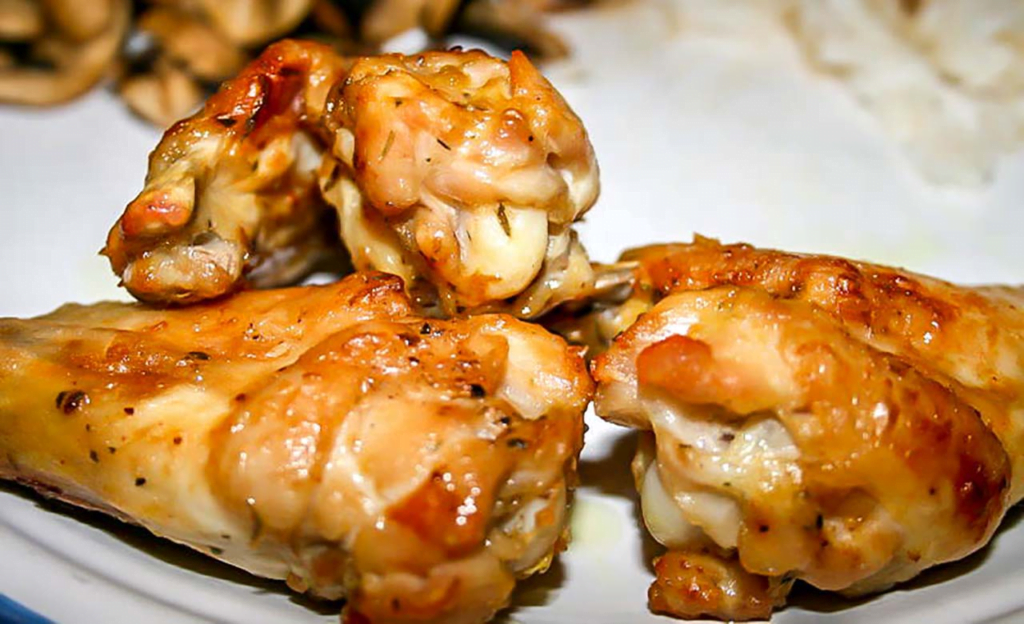
From the savory goodness of “Poulet Bicyclette” (bicycle chicken) to the mouthwatering “To” (a millet-based dish), Burkina Faso’s cuisine is a delightful blend of flavors influenced by its multicultural heritage.
The Mask Festival
Every two years, Burkina Faso hosts the International Arts and Crafts Fair, featuring mesmerizing mask dances and vibrant cultural displays.
Legal Age of Marriage

In Burkina Faso, the legal age for marriage is 17 for girls and 20 for boys. However, child marriage remains a concern, with many young girls forced into unions before they reach adulthood.
Ritual Circumcision

Traditional circumcision ceremonies are prevalent in Burkina Faso, marking important milestones in a person’s life. While these rituals hold cultural significance, they also raise concerns about health and safety.
Gender Inequality
Despite progress in recent years, gender inequality persists in Burkina Faso, with women often facing barriers to education, employment, and decision-making roles.
Burkinabé Hospitality

Hospitality is deeply ingrained in Burkinabé culture, with visitors warmly welcomed and treated with respect and generosity.
Voodoo Practices
While Islam and Christianity are the predominant religions, traditional African beliefs, including voodoo, still play a significant role in many communities across Burkina Faso.
Challenges of Poverty
Burkina Faso faces significant economic challenges, with poverty levels remaining high and access to basic services, such as healthcare and education, limited in many rural areas.
From its rich cultural tapestry to its societal complexities, Burkina Faso is a country of contrasts and contradictions, offering a fascinating glimpse into the complexities of West African life.
Burkina Faso’s History and the Effect it has had on the Cuisine
Burkina Faso, a vibrant West African nation, boasts a cuisine as rich and diverse as its history. Buckle up for a delicious adventure where scorching Saharan winds inform the use of drought-resistant grains, and French colonial influences mingle with age-old indigenous cooking techniques.
Let’s embark on a historical food tour, exploring how each era has left its mark on Burkina Faso’s flavorful soul.
Ancient Empires and Early Trade Routes (8th Century BC – 17th Century AD)

Iron Age Innovation: Iron production dates back to at least the 8th century BC, and by the 5th century BC, the practice spread across the region. This led to the development of the Bura culture, flourishing from the 3rd to 13th centuries AD.
These early civilizations laid the groundwork for West Africa’s culinary traditions.
Golden Trade Routes: Loropéni, a UNESCO World Heritage Site, thrived between the 14th and 17th centuries as a crucial link in the ancient gold trade. This era likely saw the exchange of spices and ingredients along these routes, influencing the flavors of the region.
The Enduring Mossi Kingdoms (11th Century – Late 19th Century)

A Legacy of Resilience: From medieval times, the central region of Burkina Faso was ruled by the Mossi people. Descendants of warriors from present-day Ghana, they blended their culinary heritage with local groups, giving rise to Burkina Faso’s signature dishes.
The Mossi fiercely defended their territory and traditions, including their unique cuisine.
French Colonial Influence (1896 – 1960)
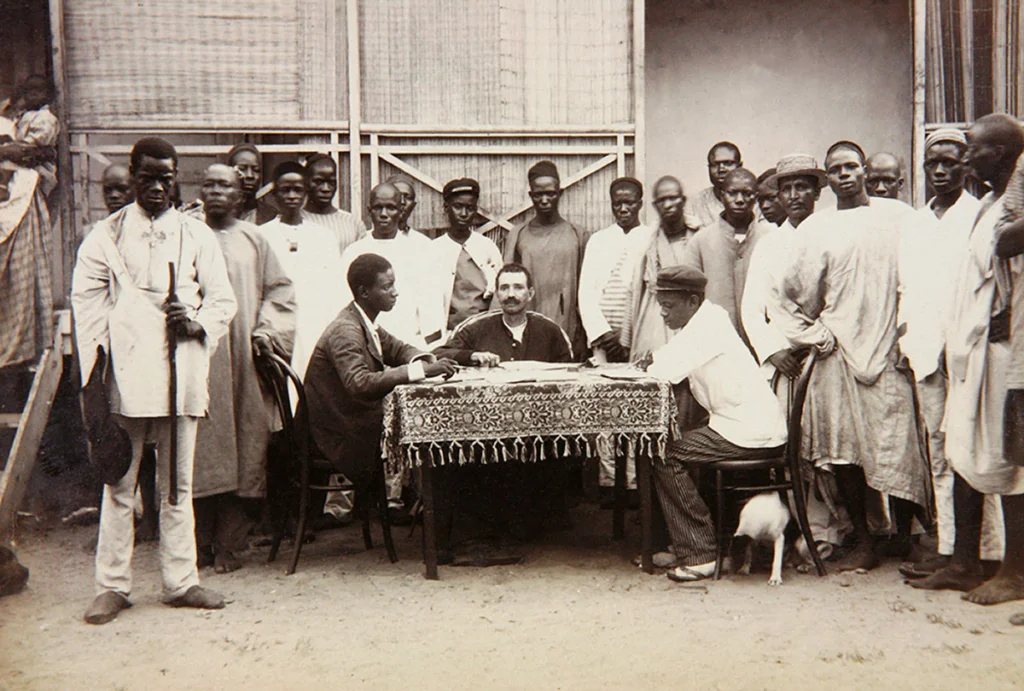
A Changing Landscape: The arrival of the French in 1896 ushered in a new era. While initial resistance was strong, French influence eventually led to the introduction of new ingredients like rice and maize, subtly shifting the Burkina Faso culinary landscape.
Independence and a New Identity (1960 – Present)

Burkina Faso Emerges: On August 5th, 1960, Burkina Faso gained independence from France. The name change in 1984 to “Land of Honest Men” reflected a newfound national identity, with its cuisine serving as a vibrant symbol of this cultural evolution.
A Fusion of Flavors
Burkina Faso cuisine is a beautiful tapestry woven from these historical threads. Staple ingredients like sorghum, millet, and peanuts form the base of most dishes, while grilled meats and a vibrant array of vegetables add depth and texture. Local spices like chili and soumbala (fermented locust beans) provide a unique kick, while French influences are evident in dishes like Riz Gras (“fat rice”).
From hearty stews like Ragout d’igname (yam stew) to the complex flavors of Babenda (featuring bitter greens and soumbala), Burkina Faso’s cuisine is a testament to its rich history and cultural heritage. So, come explore the flavors of Burkina Faso – a delicious journey awaits!
References
- travelfoodatlas.com
- History of Burkina Faso
- history of Burkina Faso – Britannica
- Burkinabe cuisine – Wikipedia
- nomadsunveiled.com
- britannica.com
How Burkina Faso’s Climate and Geography Influences Food

Burkina Faso, a landlocked gem nestled in the heart of West Africa, boasts a cuisine as vibrant as its sun-drenched landscapes. Let’s embark on a delicious adventure, exploring how location, climate, and geography have sculpted this unique culinary tapestry.
Sun-Kissed Ingredients & Trade Winds of Flavor (Location & Climate)
Burkina Faso’s position in West Africa, surrounded by neighbors like Mali and Ghana, has fostered a rich exchange of ingredients and culinary traditions. Think of it as a historical spice route on land! The climate plays a starring role too.
The hot, dry season (reaching a scorching (104°F!) dictates the use of drought-resistant staples like millet and sorghum. The brief rainy season, however, brings a welcome burst of life, allowing farmers to cultivate vegetables and even some precious mangoes.
Sahel Savanna Symphony: A Culinary Landscape Defined by Geography
Imagine a country divided by a climatic split. The northern half, bordering the Sahara, lies in the Sahel region, characterized by hot, dry winds and limited rainfall. Here, millet reigns supreme, forming the base of the staple dish “Tô.”
Travel south, and the landscape transforms into a lush savanna with a more forgiving rainy season. This region boasts a wider variety of ingredients, reflected in dishes like “Riz Gras” (a hearty rice stew) and “Babenda” (a one-pot wonder featuring bitter greens and fermented locust beans).
Urban Delights vs. Rural Traditions: A Culinary Tale of Two Burkinabes
Modernity has brought a touch of globalization to Burkina Faso’s urban areas. Imported ingredients and diverse restaurants offer a wider culinary palette. However, venture into the rural heartland, and the traditional culinary scene unfolds.
Here, meals often center around “Tộ,” accompanied by flavorful sauces and protein sources like dried fish. Local spices like the pungent “soumbala” (fermented locust beans) add a unique kick to dishes.
A Culinary Adventure Awaits
Burkina Faso’s cuisine is a testament to its rich history and diverse geography. Each region boasts its own signature dishes, waiting to tantalize your taste buds. From the classic simplicity of “Riz Gras” to the bold flavors of “Babenda,” Burkina Faso offers a culinary adventure unlike any other.
So, pack your appetite and get ready to explore the delicious heart of West Africa!
References
Understanding the Essence of Burkina Faso food Recipes

Burkina Faso’s cuisine isn’t just about sustenance; it’s a vibrant tapestry woven from history, geography, and sheer ingenuity. Unlike its more well-known West African neighbors, Burkina Faso boasts a unique and often surprising culinary landscape.
Here, we delve into the essence of what makes Burkina Faso’s food scene so special:
A Symphony of Staples
Scorching Saharan winds and limited rainfall have shaped Burkina Faso’s agricultural landscape. Unlike coastal West Africa with its focus on rice, Burkina Faso’s heart beats to the rhythm of drought-resistant grains like sorghum and millet.
These nutritional powerhouses form the base of most dishes, offering a complex and earthy flavor profile. Corn plays an increasing role, while fonio, an ancient grain prized for its digestibility, adds a touch of history to every bite.
A Celebration of Local Bounty
While grains dominate, Burkina Faso’s cuisine isn’t all about simplicity. The brief but precious rainy season allows for a surprising diversity of vegetables. Yams, a starchy staple, feature prominently in stews like “Ragout d’igname.”
Bitter greens like kale and spinach add a welcome pop of bitterness to dishes like “Babenda.” Don’t forget the tomatoes, onions, peppers, and a vibrant array of local vegetables, all adding their unique notes to the symphony of flavors.
The Spice of Life
Burkina Faso’s cuisine isn’t shy on spice. Chili peppers add a fiery kick, while the unique soumbala, fermented locust beans, provides a pungent and earthy depth that sets Burkina Faso apart.
This unique ingredient adds a complex layer of umami, similar to blue cheese, but with a distinctly African twist.
A Legacy of Innovation
Burkina Faso’s culinary traditions are a testament to human ingenuity. Take Tô, the national dish. This versatile dough, made from millet, sorghum, or corn, can be enjoyed as a base for stews, molded into dumplings, or even eaten like a pancake.
Sun-drying techniques maximize the shelf life of ingredients during the long, dry season, ensuring food security throughout the year.
A Culinary Journey Through Time
Burkina Faso’s cuisine is a historical treasure trove. French influences can be seen in dishes like “Riz Gras” (fat rice), a comforting stew of rice, vegetables, and sometimes meat.
Dried fish, a legacy of trade routes, still finds its way into many dishes, offering a taste of the past.
A Culinary Adventure Awaits
Burkina Faso’s cuisine is an adventure waiting to be savored. From the comforting simplicity of Tô to the surprising complexity of Babenda, each bite is a journey through this fascinating country’s history, geography, and cultural heritage.
So ditch the expected and embark on a culinary adventure unlike any other. Burkina Faso awaits, ready to tantalize your taste buds and leave you with a newfound appreciation for the beauty and diversity of West African cuisine.
Traditional Burkina Faso Food

Delve into the Heart of Burkina Faso: Exploring 5 Mouthwatering Traditional Dishes!
Poulet Bicyclette (Bicycle Chicken)
Bursting with flavor, Poulet Bicyclette is a quintessential dish in Burkina Faso. The name stems from the free-range chickens that roam villages, getting their exercise by darting around like cyclists.
This dish typically involves marinating chicken in a blend of spices, including garlic, ginger, and chili peppers, before grilling it to perfection. Served with a side of spicy sauce and rice or couscous, Poulet Bicyclette embodies the essence of Burkinabé cuisine.
To
As a staple food in Burkina Faso, To holds a special place in the hearts of its people. This hearty dish consists of millet cooked to a smooth, porridge-like consistency and served with a variety of sauces.
From peanut sauce to leafy greens or tomato-based sauces, the accompaniments add depth and complexity to the dish. To is not only delicious but also a source of sustenance and comfort for many Burkinabé families.
Riz Gras (Fat Rice)
Riz Gras, or Fat Rice, is a beloved dish that epitomizes the fusion of flavors in Burkina Faso. The dish features rice cooked in a rich tomato sauce infused with onions, garlic, and an array of spices, including cumin and coriander.
Meat, such as beef, chicken, or goat, is often added to the stew, enhancing its savory goodness. Riz Gras is a favorite during celebrations and gatherings, symbolizing unity and abundance.
Brochettes (Grilled Skewers)
A popular street food in Burkina Faso, Brochettes are grilled skewers bursting with tantalizing flavors. Typically made with marinated chunks of beef, lamb, or chicken, these skewers are grilled over an open flame until charred and tender.
The marinade, often a blend of spices, vinegar, and oil, infuses the meat with a mouthwatering aroma and taste. Served with grilled onions and a side of spicy sauce, Brochettes are a delicious indulgence enjoyed by locals and visitors alike.
Kossam (Millet Pancakes)
Kossam offers a delightful twist on the classic pancake, showcasing Burkina Faso’s love for millet. Made from fermented millet flour, these pancakes are light, fluffy, and slightly tangy in flavor.
Traditionally served for breakfast or as a snack, Kossam can be enjoyed plain or topped with sweet or savory accompaniments, such as honey, jam, or spicy sauce. Whether eaten on its own or paired with a hot cup of tea, Kossam is a simple yet satisfying treat loved by all.
Indulge your senses and tantalize your taste buds with these traditional Burkinabé dishes, each offering a glimpse into the vibrant culinary heritage of this West African nation.
Burkina Faso’s National Dish
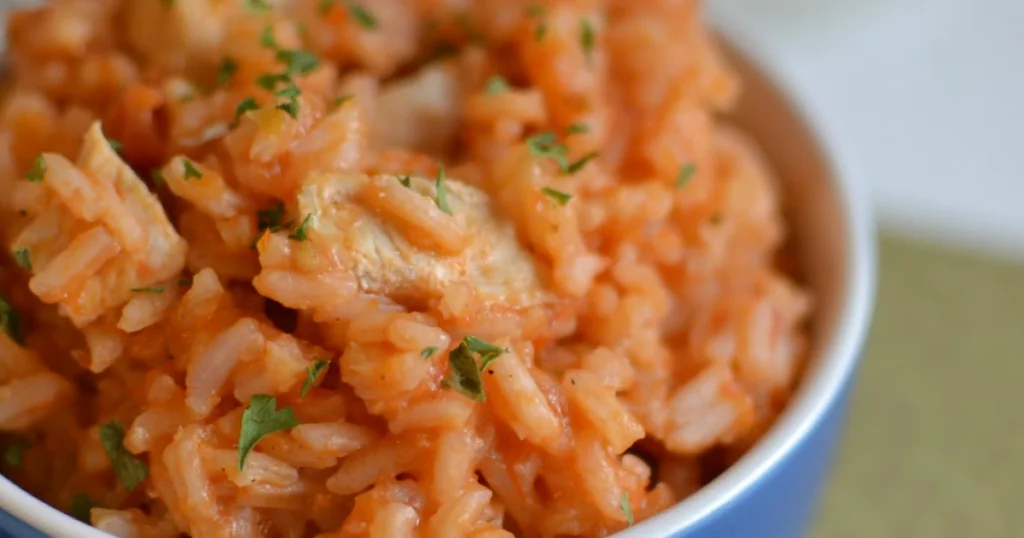
Burkina Faso’s culinary scene boasts a vibrant tapestry of flavors, but one dish reigns supreme: Riz Gras, literally translating to “fat rice” in French.
Unlike its name suggests, Riz Gras isn’t about culinary indulgence; it’s a heartwarming and delicious testament to Burkina Faso’s resourcefulness and the power of simple ingredients.
A One-Pot Wonder
Riz Gras is the epitome of comfort food. Imagine fluffy white rice cooked in a rich tomato base, bursting with vibrant flavors. This isn’t your average tomato sauce, though. It’s simmered with an orchestra of local heroes: chopped onions, fragrant garlic, and sometimes colorful additions like carrots, peppers, and eggplant.
The secret weapon? A generous amount of vegetable oil, which not only adds richness but also extends the shelf life of the dish during the long, dry season.
Local Twists and Regional Flair
While the core ingredients remain consistent, Riz Gras embraces regional variations. In some areas, it might be a vegetarian delight, while others incorporate tender pieces of chicken or goat for added protein.
A sprinkle of fresh herbs or a dollop of spicy chili sauce can further personalize the dish, making it a true reflection of Burkina Faso’s diverse culinary landscape.
Beyond the Plate: A Symbol of Community
Riz Gras is more than just a dish; it’s a symbol of community. Traditionally prepared in large pots, it’s often served at family gatherings and celebrations.
The act of sharing this flavorful dish fosters a sense of togetherness and warmth, reminding everyone of the importance of resourcefulness and community spirit.
A Taste of Burkina Faso
For travelers seeking an authentic Burkina Faso experience, Riz Gras is a must-try. It’s a dish readily available in local restaurants and a staple in most homes. Each bite offers a glimpse into the heart of Burkina Faso’s cuisine: simple, flavorful, and deeply rooted in tradition.
So, ditch the fancy restaurants and join a local family for a plate of Riz Gras. You’ll not only discover a delicious dish, but also experience the true essence of Burkina Faso’s warm hospitality.
The Most Popular Burkina Faso Recipes

Riz Gras (Fat Rice)
Riz Gras is a hearty dish featuring rice cooked in a flavorful tomato sauce, often with onions, garlic, and spices. It’s typically served with meat such as beef, chicken, or goat, making it a filling and satisfying meal.
Poulet Bicyclette (Bicycle Chicken)
Poulet Bicyclette is a classic dish made with marinated free-range chicken, grilled to perfection. It’s seasoned with a blend of spices like garlic, ginger, and chili peppers, giving it a deliciously bold flavor.
To
To is a staple dish in Burkina Faso, consisting of millet cooked into a smooth, porridge-like consistency. It’s often served with various sauces, such as peanut sauce or tomato-based sauces, providing a comforting and nourishing meal.
Brochettes (Grilled Skewers)
Brochettes are popular street food in Burkina Faso, featuring grilled skewers of marinated meat, typically beef, lamb, or chicken. The meat is grilled over an open flame, resulting in juicy, flavorful skewers enjoyed with grilled onions and spicy sauce.
Kossam (Millet Pancakes)
Kossam is a delightful breakfast or snack made from fermented millet flour. These pancakes are light, fluffy, and slightly tangy, perfect for topping with sweet or savory accompaniments like honey, jam, or spicy sauce.
Ragout D’Igname (Yam Stew)
Ragout D’Igname is a comforting stew made with yams, onions, tomatoes, and a variety of spices. It’s a hearty and flavorful dish that showcases the versatility of yams in Burkinabé cuisine.
Baba au Dja (Peanut Sauce)
Baba au Dja is a savory peanut sauce made with ground peanuts, tomatoes, onions, and spices. It’s often served with rice or millet, adding a rich and nutty flavor to the dish.
Poulet Yassa (Yassa Chicken)
Poulet Yassa is a flavorful chicken dish marinated in a tangy sauce made from onions, mustard, vinegar, and spices. It’s then grilled or roasted to perfection, resulting in tender and juicy chicken with a deliciously tangy flavor.
Bissap (Hibiscus Drink)
Bissap is a refreshing drink made from dried hibiscus flowers, often sweetened with sugar and flavored with ginger or mint. It’s a popular beverage in Burkina Faso, enjoyed cold on hot days or served warm during cooler months.
Tô Zangbéto (Sorghum Porridge):
Tô Zangbéto is a traditional porridge made from sorghum flour cooked with water to a thick consistency. It’s a nutritious and filling dish often eaten for breakfast or as a snack, served with milk, sugar, or peanut sauce.
Indulge in the diverse and delicious flavors of Burkina Faso with these popular recipes, each offering a unique taste of West African cuisine.
Exploring Burkina Faso Street Food

Beyond the walls of restaurants lies a vibrant street food scene, a symphony of sizzling grills, aromatic spices, and friendly vendors eager to share the culinary soul of their country.
Buckle up for a mouthwatering journey as we explore the most common street food finds and the cities where these delectable bites truly shine.
5 Street Food Gems to Tantalize Your Taste Buds
Brochettes
Skewers are a universal language of street food, and Burkina Faso is no exception. Tender chunks of marinated meat (beef, chicken, goat) are threaded onto skewers and grilled to smoky perfection. Don’t forget to ask for a squeeze of Burkina Faso’s signature spicy peanut sauce for an extra flavor kick.
Beignets
These fluffy West African doughnuts are a universal crowd-pleaser. Deep-fried dough, sometimes filled with jam or chocolate, offers a sweet and satisfying treat when that afternoon sugar craving hits.
Accara
Don’t be fooled by the simplicity. These deep-fried fritters, made from a batter of black-eyed peas or beans, are seasoned with onions, herbs, and spices. They offer a delightful explosion of taste and texture, perfect for a savory snack on the go.
Pain de Singe (Monkey Bread)
This intriguing name translates to “monkey bread,” but fear not, there are no primates involved! This traditional bread is made from millet or sorghum flour and baked in a clay oven.
It boasts a unique slightly sour taste and pairs perfectly with stews or grilled meats.
Domades
These bite-sized delights are a legacy of Burkina Faso’s rich culinary heritage. Tender grape leaves are stuffed with a flavorful mixture of rice, herbs, and sometimes minced meat, offering a delightful combination of textures and flavors.
Cities Where the Streets Sizzle
Ouagadougou
As the bustling capital, Ouagadougou offers the most diverse and vibrant street food scene in Burkina Faso. From bustling markets overflowing with fresh produce to dedicated street food stalls, the city caters to every craving.
Bobo-Dioulasso
This historic city in the country’s southwest boasts a thriving street food scene influenced by neighboring Mali. Expect to find a wider variety of grilled meats and stews alongside classic Burkina Faso fare.
Banfora
Nestled in Burkina Faso’s Cascades Region, Banfora is known for its agricultural bounty. This translates to a street food scene rich in fresh vegetables and locally sourced ingredients. Look out for fritters made with seasonal vegetables and unique variations on classic dishes.
A Culinary Adventure Awaits:
Exploring Burkina Faso’s Street food scene is an adventure for all senses. Be bold, embrace the unknown, and don’t be afraid to ask questions! Every bite is a journey into the heart of Burkina Faso’s culture and a chance to connect with the friendly street vendors who keep this culinary tradition alive.
So, grab some napkins, embrace the vibrant atmosphere, and get ready to experience the true flavors of Burkina Faso, one delicious bite at a time!
Exploring Burkina Faso Ingredients: The Flavors of Burkina Faso’s Cuisine
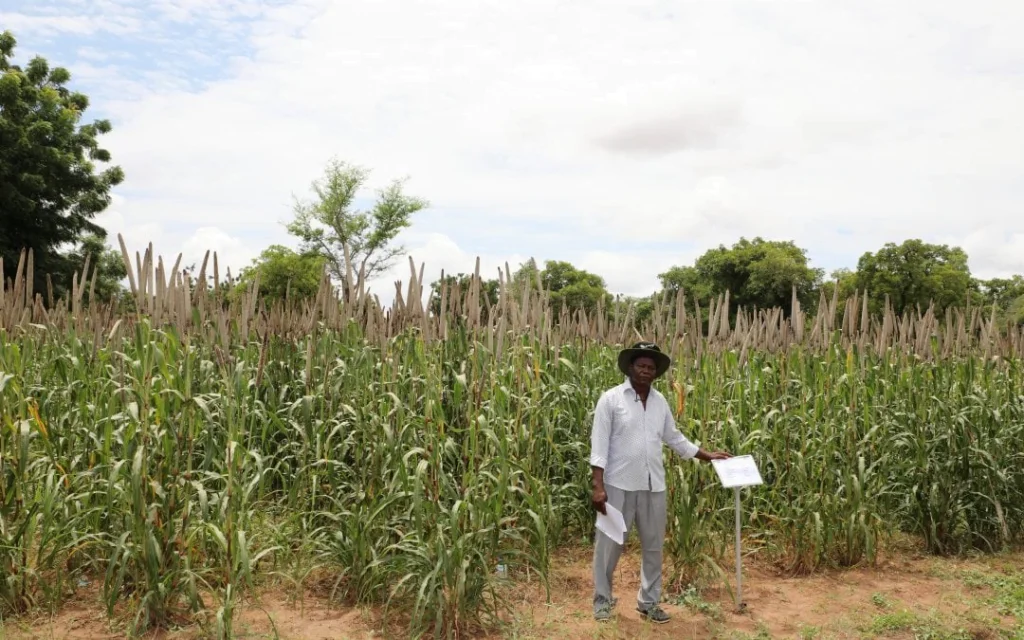
Millet
As a staple crop in Burkina Faso, millet takes center stage in many dishes. This ancient grain is versatile and nutritious, used to make porridges like “To” or “Tô Zangbéto,” as well as flatbreads and pancakes such as “Kossam.”
Sorghum
Another essential grain in Burkinabé cuisine, sorghum features prominently in various dishes. It’s used to make porridges, beverages, and even fermented into “Dolo,” a traditional beer enjoyed by many.
Peanuts
Peanuts are a common ingredient in Burkina Faso’s cuisine, adding depth and flavor to dishes. Peanut sauce, known as “Baba au Dja,” is a popular accompaniment to rice, millet, and meat dishes, offering a rich and nutty taste.
Tomatoes
Tomatoes are a staple ingredient in many Burkinabé dishes, providing a tangy sweetness and vibrant color to sauces and stews. They are often combined with onions, garlic, and spices to create flavorful bases for various meals.
Onions
Onions are essential for building flavor in Burkinabé cuisine, used as a base in many dishes. Whether sautéed, caramelized, or raw, onions add depth and aroma to stews, sauces, and grilled meats.
Chili Peppers
For those who enjoy a bit of heat, chili peppers are a must-have ingredient in Burkina Faso’s cuisine. Whether dried, fresh, or ground into powders, chili peppers add spice and complexity to dishes like “Poulet Bicyclette” and sauces.
Leafy Greens
Leafy greens such as spinach, collard greens, and amaranth are commonly used in Burkinabé cuisine, providing essential nutrients and freshness to meals. They are often incorporated into stews, soups, and sauces, adding color and texture.
Meat
While meat is not as prevalent in traditional Burkinabé cuisine compared to grains and vegetables, it still plays a significant role. Chicken, beef, goat, and lamb are commonly used in dishes like grilled skewers (“Brochettes”), stews, and marinated meats.
Fish
In regions with access to rivers and lakes, fish is an important protein source in Burkinabé cuisine. Whether grilled, fried, or stewed, fish adds a delicious flavor to meals and provides essential nutrients.
Mangoes and Other Fruits
Burkina Faso’s tropical climate fosters the growth of a variety of fruits, including mangoes, bananas, papayas, and citrus fruits. These fruits are enjoyed fresh as snacks or incorporated into desserts, juices, and sauces, adding sweetness and freshness to dishes.
From hearty grains and flavorful spices to fresh produce and protein sources, Burkina Faso’s cuisine celebrates the abundance of ingredients found in the region, resulting in a diverse and delicious culinary tapestry.
What are the Health Implications of Burkina Faso Cuisine?

Burkina Faso’s diet presents a fascinating story of resilience and ongoing struggles. While the country grapples with malnutrition, particularly in children under five, it also boasts a rich culinary heritage with potential health benefits.
Let’s delve into the complexities of Burkina Faso’s dietary landscape.
Malnutrition: A Persistent Challenge
Burkina Faso faces significant challenges when it comes to malnutrition. While strides have been made in reducing stunting (low height-for-age), a significant portion of children under five still experience it.
However, wasting (low weight-for-height) remains a concern, exceeding the African average. This highlights the need for continued efforts to ensure access to nutritious food for young children.
A Glimpse of Hope: Breastfeeding and Low Birth Weight
One bright spot is the high rate of exclusive breastfeeding in infants under six months, exceeding the global target. This practice provides essential nutrients and strengthens babies’ immune systems.
Additionally, the relatively low incidence of low birth weight suggests a growing focus on maternal health.
Non-Communicable Diseases: A Growing Concern
While obesity rates in Burkina Faso are lower than the African average, the prevalence of diabetes is a cause for concern, particularly among men.
High blood pressure and cholesterol levels are also on the rise, indicating a potential shift towards diet-related non-communicable diseases (NCDs) as the population ages and dietary patterns change.
Food Security and Hunger: A Persistent Struggle
Despite agriculture being the mainstay of many livelihoods, food insecurity remains a significant challenge in Burkina Faso.
Over 20% of the population experiences food insecurity, highlighting the need for improved agricultural practices, food distribution systems, and economic development.
Traditional Diets: Strength and Vulnerability
Rural areas hold onto a rich culinary tradition centered around staples like Tô, a porridge made from millet, sorghum, or corn, often accompanied by sauces made with local ingredients. Dried fish serves as a valuable protein source.
However, limited access to diverse foods due to economic constraints can lead to nutritional deficiencies. Additionally, the growing influence of imported products and globalized diets in urban areas poses a potential threat to these traditional, potentially health-promoting ways of eating.
A Look Towards a Healthier Future
Burkina Faso’s life expectancy reflects the challenges the population faces. Cardiovascular diseases, diabetes, and related conditions are significant contributors to mortality, often linked to risk factors like high blood pressure, cholesterol, and obesity.
Improving access to quality healthcare and promoting preventive measures, including a focus on healthy eating habits, are crucial for future generations to thrive.
Burkina Faso’s dietary landscape is a complex tapestry woven with challenges and opportunities. By harnessing the strengths of its traditional food culture, addressing nutritional deficiencies, and promoting access to healthcare, Burkina Faso can move towards a healthier future for its people.
References
- globalnutritionreport.org
- data.who.int
- usaid.gov
- gh.bmj.com
- inddex.nutrition.tufts.edu
- europepmc.org
- population.un.org
- apps.who.int
- who.int
Burkina Faso Food Recipes to Try at Home
Burkina Faso’s cuisine is a hidden gem, waiting to tantalize your taste buds and transport you on a delicious journey to West Africa. More than just a collection of dishes, Burkina Faso’s food scene is a captivating story etched in every bite.
From the heartiness of millet to the fiery kick of chilies, each element reflects the country’s rich history, geography, and the enduring spirit of its people.
But you don’t need a plane ticket to experience these incredible flavors! This chapter is your gateway to bringing the magic of Burkina Faso’s cuisine right into your own kitchen.
We’ve curated a collection of authentic recipes, each carefully chosen to showcase the unique ingredients and cooking techniques of this fascinating country.
Burkina Faso Food – Ragout D’igname (Yam Stew)

Exploring the Rich Heritage of Burkina Faso: Ragout D’Igname (Yam Stew)
Welcome, fellow food adventurers! Today, we’re journeying to the heart of West Africa to discover a dish as comforting as it is flavorful: Ragout D’Igname, also known as Yam Stew.
Originating from Burkina Faso, this hearty stew is a beloved staple in many households, reflecting the region’s vibrant culinary heritage.
Background and Region:
Burkina Faso, often referred to as the “Land of Honest Men,” boasts a rich tapestry of cultures, traditions, and flavors. Located in West Africa, this landlocked country is renowned for its warm hospitality and diverse cuisine.
Ragout D’Igname, a traditional dish in Burkina Faso, showcases the region’s reliance on yams, a staple crop in many West African countries. This stew is a comforting and nourishing meal enjoyed by families across the country, especially during festive occasions and gatherings.
Burkina Faso Food – Ragout D’igname Ingredients:
- 2 large yams, peeled and diced
- 1 onion, finely chopped
- 2 tomatoes, diced
- 2 cloves garlic, minced
- 1 tablespoon tomato paste
- 2 cups vegetable broth
- 1 cup peanut butter
- 2 tablespoons vegetable oil
- 1 teaspoon ground ginger
- 1 teaspoon ground coriander
- Salt and pepper to taste
- Fresh cilantro or parsley for garnish
Burkina Faso Food – Ragout D’igname Recipe:
Ingredients Preparation:
- Prepare the Yams: Peel the yams and dice them into bite-sized pieces. Set aside.
- Chop the Onion and Tomatoes: Finely chop the onion and dice the tomatoes. Set aside separately.
- Mince the Garlic: Peel and mince the garlic cloves. Set aside.
Cooking Instructions:
- Sauté the Aromatics: In a large pot, heat the vegetable oil over medium heat. Add the chopped onion and minced garlic, and sauté until softened and fragrant, about 3-4 minutes.
- Add the Tomatoes and Tomato Paste: Stir in the diced tomatoes and tomato paste, and cook for another 2-3 minutes, until the tomatoes begin to soften and release their juices.
- Add the Yams and Spices: Add the diced yams to the pot, along with the ground ginger and coriander. Season with salt and pepper to taste, and stir to coat the yams with the aromatic mixture.
- Pour in the Vegetable Broth: Pour the vegetable broth into the pot, ensuring that the yams are fully submerged. Bring the mixture to a simmer, then reduce the heat to low and cover the pot. Allow the stew to simmer gently for 20-25 minutes, or until the yams are tender.
- Incorporate the Peanut Butter: Once the yams are cooked through, stir in the peanut butter until it is fully incorporated into the stew. Simmer for an additional 5 minutes to allow the flavors to meld together.
- Serve and Garnish: Ladle the Ragout D’Igname into bowls and garnish with fresh cilantro or parsley. Serve hot and enjoy the comforting flavors of Burkina Faso!
Serving Size and Nutritional Information:
- Serves: 4-6 people
- Estimated Cooking Time: 45 minutes
- Nutritional Information (per serving):
- Calories: Approximately 350
- Protein: 9g
- Carbohydrates: 40g
- Fat: 20g
- Fiber: 6g
So there you have it, folks! Ragout D’Igname, a delicious and hearty stew from Burkina Faso that will warm your soul and satisfy your taste buds. Give it a try and let me know how it turns out in the comments below. Happy cooking!
Burkina Faso Food – Babenda (Featuring Bitter Greens and Soumbala)

Uncovering the Culinary Roots of Burkina Faso: Babenda (Featuring Bitter Greens and Soumbala)
Welcome, food enthusiasts! Today, we’re diving into the heart of West Africa to explore the vibrant flavors of Burkina Faso through a traditional dish called Babenda. Originating from this culturally rich region, Babenda is a celebration of local ingredients, including bitter greens and Soumbala, a fermented African locust bean paste.
Background and Region:
Burkina Faso, known as the “Land of Honest Men,” boasts a diverse culinary landscape shaped by centuries of tradition and cultural exchange. Babenda, a popular dish in the region, reflects the resourcefulness of Burkinabé cuisine, utilizing locally available ingredients to create a flavorful and nourishing meal. Bitter greens, such as spinach or collard greens, are abundant in the region’s fertile soil, while Soumba
la adds a unique umami depth to the dish, showcasing the ingenuity of West African cooking.
Burkina Faso Food – Babenda Ingredients:
- 2 cups bitter greens (spinach, collard greens, or amaranth), chopped
- 1 onion, finely chopped
- 2 tomatoes, diced
- 2 cloves garlic, minced
- 1 tablespoon Soumbala (fermented African locust bean paste)
- 2 tablespoons peanut butter
- 2 cups vegetable broth
- 2 tablespoons vegetable oil
- 1 teaspoon ground ginger
- Salt and pepper to taste
- Fresh chili peppers (optional, for heat)
- Cooked rice or millet, for serving
Burkina Faso Food – Babenda Recipe:
Ingredients Preparation:
- Prepare the Bitter Greens: Wash the bitter greens thoroughly and chop them into bite-sized pieces. Set aside.
- Chop the Onion and Tomatoes: Finely chop the onion and dice the tomatoes. Set aside separately.
- Mince the Garlic: Peel and mince the garlic cloves. Set aside.
Cooking Instructions:
- Sauté the Aromatics: In a large pot, heat the vegetable oil over medium heat. Add the chopped onion and minced garlic, and sauté until softened and fragrant, about 3-4 minutes.
- Add the Tomatoes and Soumbala: Stir in the diced tomatoes and Soumbala, and cook for another 2-3 minutes, allowing the flavors to meld together.
- Incorporate the Bitter Greens: Add the chopped bitter greens to the pot, along with the ground ginger and optional chili peppers for heat. Stir well to combine.
- Pour in the Vegetable Broth: Pour the vegetable broth into the pot, ensuring that the bitter greens are fully submerged. Bring the mixture to a simmer, then reduce the heat to low and cover the pot. Allow the Babenda to simmer gently for 15-20 minutes, or until the greens are tender.
- Add the Peanut Butter: Once the bitter greens are cooked through, stir in the peanut butter until it is fully incorporated into the stew. Simmer for an additional 5 minutes to thicken the sauce and allow the flavors to develop.
- Serve with Rice or Millet: Ladle the Babenda into bowls and serve hot with cooked rice or millet. Enjoy the comforting flavors of Burkina Faso!
Serving Size and Nutritional Information:
- Serves: 4-6 people
- Estimated Cooking Time: 30 minutes
- Nutritional Information (per serving):
- Calories: Approximately 200
- Protein: 6g
- Carbohydrates: 15g
- Fat: 12g
- Fiber: 4g
There you have it, friends! Babenda, a delightful dish from Burkina Faso that celebrates the bold flavors and cultural heritage of West Africa. Give it a try and experience the taste of this vibrant region for yourself. Happy cooking!
Burkina Faso Food – Tô

Exploring the Heart of Burkina Faso: Tô, a Staple of West African Cuisine
Hey there, foodies! Today, we’re delving into the culinary traditions of Burkina Faso, a vibrant country nestled in West Africa. Our spotlight dish? Tô, a beloved staple that’s as comforting as it is nutritious. Join me as we uncover the rich history and cultural significance behind this simple yet satisfying dish.
Background and Region:
Burkina Faso, often referred to as the “Land of Honest Men,” boasts a diverse culinary landscape shaped by its vibrant culture and fertile lands. Tô, a traditional dish in Burkina Faso, holds a special place in the hearts of its people. Made from millet flour, Tô has been a dietary staple for centuries, providing sustenance and nourishment to families across the region. Its simple preparation and wholesome ingredients reflect the resourcefulness and resilience of Burkinabé cuisine.
Burkina Faso Food – Tô Ingredients:
- 2 cups millet flour
- 4 cups water
- Pinch of salt (optional)
- Peanut sauce or soup, for serving
Burkina Faso Food – Tô Recipe:
Ingredients Preparation:
- Measure the Millet Flour: Measure out 2 cups of millet flour and set aside.
- Boil the Water: In a large pot, bring 4 cups of water to a boil over medium heat.
Cooking Instructions:
- Prepare the Tô Dough: Once the water is boiling, slowly add the millet flour to the pot while stirring continuously with a wooden spoon or whisk. Keep stirring to prevent lumps from forming.
- Cook the Tô: Continue to cook the mixture over medium heat, stirring constantly, until it thickens and forms a smooth, porridge-like consistency, about 5-7 minutes. If desired, add a pinch of salt to taste.
- Serve the Tô: Once the Tô is cooked to your desired consistency, remove it from the heat and transfer it to serving bowls. Tô is traditionally served hot alongside peanut sauce or soup, which can be drizzled over the top or served on the side for dipping.
- Enjoy!: Serve the Tô immediately and enjoy the comforting flavors of Burkina Faso’s traditional cuisine.
Serving Size and Nutritional Information:
- Serves: 4-6 people
- Estimated Cooking Time: 15 minutes
- Nutritional Information (per serving):
- Calories: Approximately 150
- Protein: 3g
- Carbohydrates: 32g
- Fat: 1g
- Fiber: 2g
There you have it, folks! Tô, a simple yet satisfying dish that embodies the essence of Burkinabé cuisine. Whether enjoyed on its own or paired with peanut sauce or soup, Tô is sure to warm your soul and tantalize your taste buds. Give it a try and let me know how it turns out!
Burkina Faso Food – Soumbala (Fermented Locust Beans)

Unveiling the Ancient Flavors of Burkina Faso: Soumbala (Fermented Locust Beans)
Greetings, fellow food explorers! Today, we’re embarking on a culinary journey to Burkina Faso, a vibrant country in West Africa known for its rich cultural heritage and diverse cuisine. Our spotlight dish? Soumbala, a traditional ingredient made from fermented locust beans.
Join me as we uncover the history and unique flavors of this ancient West African delicacy.
Background and Region:
Burkina Faso, often called the “Land of Honest Men,” boasts a culinary tradition as rich and diverse as its landscapes. Soumbala, a staple ingredient in Burkinabé cuisine, has been cherished for generations.
Originating from the Mossi and Gurunsi ethnic groups, Soumbala is made by fermenting locust beans, imparting a distinct umami flavor to dishes. Used in soups, stews, and sauces, Soumbala adds depth and complexity to traditional Burkinabé recipes.
Burkina Faso Food – Soumbala Ingredients:
- 2 cups dried locust beans
- 1 cup water
- Salt (optional)
Burkina Faso Food – Soumbala Recipe:
Ingredients Preparation:
- Prepare the Locust Beans: Rinse the dried locust beans under cold water to remove any dirt or debris. Drain well and set aside.
Cooking Instructions:
- Fermentation Process: Place the dried locust beans in a clean, dry container. Add water until the beans are fully submerged. Cover the container loosely with a lid or cloth to allow air circulation. Let the beans ferment in a warm, dark place for 3-5 days, stirring occasionally.
- Check for Fermentation: After 3-5 days, check the beans for signs of fermentation. They should have a slightly sour smell and a soft texture. If they are still firm, continue to ferment for another day or two, until they reach the desired consistency.
- Drain and Mash: Once the beans are fully fermented, drain off any excess liquid. Transfer the beans to a clean bowl and mash them with a fork or potato masher until they form a paste-like consistency.
- Season with Salt (Optional): If desired, season the Soumbala with salt to taste. Remember that the fermentation process adds some saltiness to the beans, so adjust accordingly.
- Store in an Airtight Container: Transfer the Soumbala to an airtight container and store it in the refrigerator for up to several months. The flavors will continue to develop over time, so feel free to experiment with aging the Soumbala for richer, more complex flavors.
- Enjoy in Recipes: Use Soumbala to add depth and richness to soups, stews, and sauces. It pairs especially well with vegetables, meats, and grains, adding a unique umami flavor to dishes.
Serving Size and Nutritional Information:
- Serves: Varies depending on usage
- Estimated Fermentation Time: 3-5 days
- Nutritional Information (per 1 tablespoon serving):
- Calories: Approximately 20
- Protein: 1g
- Carbohydrates: 3g
- Fat: 1g
- Fiber: 1g
There you have it, friends! Soumbala, a treasured ingredient from Burkina Faso that adds depth and complexity to dishes. Give it a try in your favorite recipes and experience the unique flavors of West Africa. Happy cooking!
Burkina Faso Food – Riz Gras (A Hearty Rice Stew)

Exploring the Heart of Burkina Faso: Riz Gras (A Hearty Rice Stew)
Hey there, food adventurers! Today, we’re jetting off to Burkina Faso, a vibrant country in West Africa known for its warm hospitality and flavorful cuisine. Our spotlight dish? Riz Gras, a hearty rice stew that’s as comforting as it is delicious.
Join me as we uncover the history and flavors of this beloved Burkinabé dish.
Background and Region:
Burkina Faso, often referred to as the “Land of Honest Men,” boasts a culinary tradition as rich and diverse as its cultural heritage. Riz Gras, which translates to “Fat Rice,” is a traditional dish that reflects the resourcefulness of Burkinabé cuisine.
Originating from the Mossi and Gurunsi ethnic groups, Riz Gras is a beloved comfort food enjoyed by families across Burkina Faso. It’s often served during special occasions and gatherings, bringing people together to share in its hearty goodness.
Burkina Faso Food – Riz Gras Ingredients:
- 2 cups rice
- 1 onion, finely chopped
- 2 tomatoes, diced
- 2 cloves garlic, minced
- 1 cup diced meat (chicken, beef, or goat)
- 2 tablespoons vegetable oil
- 4 cups vegetable or chicken broth
- 1 teaspoon ground ginger
- 1 teaspoon ground coriander
- Salt and pepper to taste
- Fresh parsley or cilantro for garnish
Burkina Faso Food – Riz Gras Recipe:
Ingredients Preparation:
- Prepare the Rice: Rinse the rice under cold water until the water runs clear. Drain well and set aside.
- Chop the Onion, Tomatoes, and Garlic: Finely chop the onion, dice the tomatoes, and mince the garlic cloves. Set aside separately.
Cooking Instructions:
- Sauté the Aromatics: In a large pot, heat the vegetable oil over medium heat. Add the chopped onion and minced garlic, and sauté until softened and fragrant, about 3-4 minutes.
- Add the Meat: Add the diced meat to the pot and cook until browned on all sides, about 5-7 minutes.
- Incorporate the Tomatoes and Spices: Stir in the diced tomatoes, ground ginger, and ground coriander, and cook for another 2-3 minutes, until the tomatoes begin to soften.
- Add the Rice and Broth: Add the rinsed rice to the pot and stir to coat it with the aromatic mixture. Pour in the vegetable or chicken broth, ensuring that the rice is fully submerged. Season with salt and pepper to taste.
- Simmer Until Cooked: Bring the mixture to a simmer, then reduce the heat to low and cover the pot. Allow the stew to simmer gently for 15-20 minutes, or until the rice is cooked through and the liquid has been absorbed.
- Serve and Garnish: Once the rice is cooked, remove the pot from the heat and fluff the rice with a fork. Serve the Riz Gras hot, garnished with fresh parsley or cilantro.
Serving Size and Nutritional Information:
- Serves: 4-6 people
- Estimated Cooking Time: 30 minutes
- Nutritional Information (per serving):
- Calories: Approximately 250
- Protein: 8g
- Carbohydrates: 40g
- Fat: 6g
- Fiber: 2g
There you have it, folks! Riz Gras, a hearty and flavorful rice stew from Burkina Faso that’s sure to warm your soul and satisfy your taste buds. Give it a try and let me know how it turns out in the comments below. Happy cooking!
Burkina Faso Food – Poulet Bicyclette (Bicycle Chicken)

Exploring the Culinary Heritage of Burkina Faso: Poulet Bicyclette (Bicycle Chicken)
Greetings, fellow foodies! Today, we’re setting our sights on Burkina Faso, a vibrant country in West Africa known for its rich cultural tapestry and flavorful cuisine. Our culinary adventure leads us to Poulet Bicyclette, a beloved dish that captures the essence of Burkinabé cooking.
Join me as we uncover the history and flavors of this iconic West African delicacy.
Background and Region:
Burkina Faso, often referred to as the “Land of Honest Men,” boasts a culinary tradition as diverse as its people. Poulet Bicyclette, which translates to “Bicycle Chicken,” holds a special place in the hearts of Burkinabés.
Originating from the Mossi ethnic group, this dish is named after the free-range chickens that roam villages, resembling cyclists as they dart around. Poulet Bicyclette is a celebration of the region’s vibrant flavors and communal spirit, enjoyed by families and friends alike during festive occasions and gatherings.
Burkina Faso Food – Poulet Bicyclette Ingredients:
- 1 whole chicken, cut into pieces
- 2 onions, finely chopped
- 3 cloves garlic, minced
- 1-inch piece of ginger, grated
- 2-3 hot chili peppers, chopped (optional, adjust to taste)
- 2 tablespoons vegetable oil
- 1 tablespoon tomato paste
- 1 teaspoon ground coriander
- 1 teaspoon ground cumin
- Salt and pepper to taste
- Fresh parsley or cilantro for garnish
Burkina Faso Food – Poulet Bicyclette Recipe:
Ingredients Preparation:
- Prepare the Chicken: Rinse the chicken pieces under cold water and pat them dry with paper towels. Season with salt and pepper to taste. Set aside.
- Chop the Onions, Garlic, and Chili Peppers: Finely chop the onions and chili peppers. Mince the garlic cloves. Grate the ginger. Set aside separately.
Cooking Instructions:
- Sauté the Aromatics: In a large skillet or Dutch oven, heat the vegetable oil over medium heat. Add the chopped onions, minced garlic, grated ginger, and chopped chili peppers. Sauté until softened and fragrant, about 5-7 minutes.
- Add the Chicken: Once the aromatics are soft, add the seasoned chicken pieces to the skillet. Brown the chicken on all sides, about 8-10 minutes.
- Incorporate the Tomato Paste and Spices: Stir in the tomato paste, ground coriander, and ground cumin, coating the chicken evenly with the spices. Cook for another 2-3 minutes to toast the spices and tomato paste.
- Simmer Until Cooked: Pour enough water into the skillet to partially cover the chicken pieces. Bring the mixture to a simmer, then reduce the heat to low and cover the skillet. Allow the chicken to simmer gently for 25-30 minutes, or until cooked through and tender.
- Serve and Garnish: Once the chicken is cooked, remove the skillet from the heat. Garnish the Poulet Bicyclette with fresh parsley or cilantro. Serve hot with your favorite side dishes, such as rice or couscous.
Serving Size and Nutritional Information:
- Serves: 4-6 people
- Estimated Cooking Time: 45 minutes
- Nutritional Information (per serving):
- Calories: Approximately 300
- Protein: 25g
- Carbohydrates: 5g
- Fat: 20g
- Fiber: 1g
There you have it, friends! Poulet Bicyclette, a flavorful and aromatic dish from Burkina Faso that’s sure to delight your taste buds. Give it a try and let me know how it turns out in the comments below. Happy cooking!
Burkina Faso Food – Brochettes (Grilled Skewers)

Exploring the Culinary Traditions of Burkina Faso: Brochettes (Grilled Skewers)
Hey there, foodies! Today, our taste buds are off on an adventure to Burkina Faso, a beautiful country in West Africa renowned for its vibrant culture and delicious cuisine. Our spotlight dish? Brochettes, also known as grilled skewers.
Join me as we uncover the history and flavors of this beloved Burkinabé street food.
Background and Region:
Burkina Faso, often referred to as the “Land of Honest Men,” boasts a culinary tradition as rich and diverse as its landscapes. Brochettes are a staple of Burkinabé street food culture, originating from the Mossi and Fulani ethnic groups. These flavorful skewers are a common sight at markets and roadside stalls, where they’re grilled over open flames and enjoyed by locals and visitors alike. Brochettes are not just a meal; they’re a celebration of community and tradition in Burkina Faso.
Burkina Faso Food – Brochettes Ingredients:
- 1 lb beef, chicken, or lamb, cut into bite-sized pieces
- 2 onions, cut into chunks
- 2 bell peppers (any color), cut into chunks
- Wooden skewers, soaked in water for 30 minutes
- 2 tablespoons vegetable oil
- Salt and pepper to taste
- Spicy sauce or peanut sauce, for serving
Burkina Faso Food – Brochettes Recipe:
Ingredients Preparation:
- Prepare the Meat and Vegetables: Cut the meat into bite-sized pieces. Cut the onions and bell peppers into chunks. Soak the wooden skewers in water for 30 minutes to prevent them from burning on the grill.
Cooking Instructions:
- Thread the Skewers: Preheat your grill or grill pan to medium-high heat. Thread the meat, onions, and bell peppers onto the soaked wooden skewers, alternating between pieces for even cooking.
- Season the Skewers: Brush the skewers with vegetable oil and season them with salt and pepper to taste. This will help them develop a delicious crust as they grill.
- Grill the Skewers: Place the skewers on the preheated grill or grill pan. Cook for 4-5 minutes on each side, or until the meat is cooked through and has beautiful grill marks.
- Serve Hot: Once the skewers are cooked to your liking, remove them from the grill and transfer them to a serving platter. Serve hot with your favorite dipping sauce, such as spicy sauce or peanut sauce.
Serving Size and Nutritional Information:
- Serves: 4 people
- Estimated Cooking Time: 15 minutes
- Nutritional Information (per serving, without sauce):
- Calories: Approximately 250
- Protein: 25g
- Carbohydrates: 8g
- Fat: 12g
- Fiber: 2g
There you have it, foodies! Brochettes, a delicious and satisfying dish from Burkina Faso that’s perfect for grilling season. Fire up the grill and give these flavorful skewers a try. You won’t be disappointed!
Burkina Faso Food – Kossam (Millet Pancakes)

Discovering the Culinary Delights of Burkina Faso: Kossam (Millet Pancakes)
Welcome, food adventurers! Today, we’re venturing into the heart of Burkina Faso, a vibrant country in West Africa known for its rich culture and flavorful cuisine. Our journey brings us to Kossam, a traditional dish that’s beloved by locals and visitors alike.
Background and Region:
Burkina Faso, often called the “Land of Honest Men,” boasts a culinary tradition steeped in tradition and community. Kossam, a staple in Burkinabé households, reflects the resourcefulness of the region’s cuisine.
Originating from the Mossi ethnic group, Kossam is made from millet flour, a staple crop in Burkina Faso. These pancakes are enjoyed at breakfast, as a snack, or alongside savory dishes, making them a versatile and cherished part of Burkinabé culinary heritage.
Burkina Faso Food – Kossam Ingredients:
- 2 cups millet flour
- 1 ripe banana, mashed
- 2 tablespoons honey or sugar
- 1 teaspoon baking powder
- Pinch of salt
- 1½ cups water
- Vegetable oil, for frying
- Optional toppings: honey, jam, fresh fruit
Burkina Faso Food – Kossam Recipe:
Ingredients Preparation:
- Prepare the Batter: In a mixing bowl, combine the millet flour, mashed banana, honey or sugar, baking powder, and a pinch of salt. Gradually add the water, stirring until a smooth batter forms. Let the batter rest for 10-15 minutes.
Cooking Instructions:
- Heat the Pan: Heat a non-stick skillet or griddle over medium heat. Lightly grease the pan with vegetable oil.
- Cook the Pancakes: Pour a ladleful of batter onto the hot skillet, spreading it out to form a pancake. Cook for 2-3 minutes on each side, or until golden brown and cooked through. Repeat with the remaining batter, adding more oil to the pan as needed.
- Serve Hot: Once cooked, transfer the Kossam to a serving plate. Serve hot with your choice of toppings, such as honey, jam, or fresh fruit.
Serving Size and Nutritional Information:
- Serves: 4 people
- Estimated Cooking Time: 20 minutes
- Nutritional Information (per serving, without toppings):
- Calories: Approximately 200
- Protein: 4g
- Carbohydrates: 40g
- Fat: 2g
- Fiber: 3g
There you have it, fellow foodies! Kossam, a delightful and wholesome treat from Burkina Faso that’s sure to brighten up your day. Whip up a batch of these Millet Pancakes and savor the flavors of West Africa. Happy cooking!
Burkina Faso Food – Tô Zangbéto (Sorghum Porridge)

Embarking on a Culinary Journey to Burkina Faso: Tô Zangbéto (Sorghum Porridge)
Greetings, food explorers! Today, our culinary adventure leads us to Burkina Faso, a vibrant country in West Africa known for its rich cultural heritage and delicious cuisine. Our destination dish? Tô Zangbéto, a comforting sorghum porridge that’s a staple in Burkinabé households.
Join me as we delve into the history and flavors of this traditional West African comfort food.
Background and Region:
Burkina Faso, often referred to as the “Land of Honest Men,” boasts a culinary tradition as diverse as its landscapes. Tô Zangbéto, originating from the Mossi ethnic group, holds a special place in the hearts of Burkinabés. Made from sorghum flour, this porridge is a symbol of warmth, nourishment, and community in Burkina Faso. Whether enjoyed for breakfast, as a midday snack, or alongside savory dishes, Tô Zangbéto is a beloved comfort food that brings people together.
Burkina Faso Food – Tô Zangbéto Ingredients:
- 1 cup sorghum flour
- 3 cups water
- Pinch of salt (optional)
- Peanut sauce or soup, for serving
Burkina Faso Food – Tô Zangbéto Recipe:
Ingredients Preparation:
- Prepare the Sorghum Flour: In a bowl, whisk the sorghum flour with 1 cup of water until smooth and free of lumps.
Cooking Instructions:
- Boil the Water: In a saucepan, bring 2 cups of water to a boil over medium-high heat.
- Add the Sorghum Flour Mixture: Once the water is boiling, slowly pour in the sorghum flour mixture while stirring continuously with a whisk or spoon to prevent clumps from forming.
- Cook the Porridge: Continue stirring the mixture as it cooks over medium heat for 5-7 minutes, or until it thickens to your desired consistency. Add more water if necessary to achieve the desired thickness.
- Season with Salt (Optional): If desired, season the porridge with a pinch of salt to taste.
- Serve Hot: Once the porridge is cooked to your liking, remove it from the heat and transfer it to serving bowls. Serve hot with peanut sauce or soup on the side for dipping or drizzling over the porridge.
Serving Size and Nutritional Information:
- Serves: 2 people
- Estimated Cooking Time: 15 minutes
- Nutritional Information (per serving, without sauce):
- Calories: Approximately 200
- Protein: 4g
- Carbohydrates: 40g
- Fat: 1g
- Fiber: 3g
There you have it, foodies! Tô Zangbéto, a comforting and nourishing sorghum porridge from Burkina Faso that’s perfect for any time of day. Whip up a batch and savor the flavors of West Africa. Happy cooking!
Burkina Faso Food – Bissap (Hibiscus Drink)

Discovering the Refreshing Flavors of Burkina Faso: Bissap (Hibiscus Drink)
Welcome, fellow food enthusiasts! Today, our culinary journey takes us to the vibrant country of Burkina Faso in West Africa, where we’ll explore the refreshing flavors of Bissap, a traditional hibiscus drink.
Background and Region:
Burkina Faso, known as the “Land of Honest Men,” boasts a rich culinary heritage shaped by its diverse cultures and fertile lands. Bissap, also known as “Bissap Rouge” or “Zobo” in other parts of West Africa, has been enjoyed for centuries across the region.
Originating from the Senegambia region, Bissap has become a popular drink in Burkina Faso, often enjoyed during celebrations, gatherings, and hot summer days. Its vibrant red color and tangy flavor make it a refreshing and invigorating beverage loved by locals and visitors alike.
Burkina Faso Food – Bissap Ingredients:
- 1 cup dried hibiscus flowers
- 8 cups water
- 1 cup sugar (adjust to taste)
- 1-2 teaspoons grated ginger (optional)
- 1 cinnamon stick (optional)
- Juice of 1-2 limes or lemons (optional)
- Ice cubes, for serving
- Mint leaves or lemon slices, for garnish (optional)
Burkina Faso Food – Bissap Recipe:
Ingredients Preparation:
- Prepare the Hibiscus Flowers: Rinse the dried hibiscus flowers under cold water to remove any dirt or debris. Drain well and set aside.
Cooking Instructions:
- Boil the Water: In a large pot, bring 8 cups of water to a boil over medium-high heat.
- Add the Hibiscus Flowers: Once the water is boiling, add the dried hibiscus flowers to the pot. Stir to submerge the flowers in the water.
- Simmer the Mixture: Reduce the heat to low and let the mixture simmer for 10-15 minutes, allowing the hibiscus flowers to infuse the water with their flavor.
- Sweeten the Drink: After simmering, remove the pot from the heat and stir in the sugar until dissolved. Adjust the sweetness to your taste preferences.
- Add Optional Flavorings: If desired, add grated ginger, a cinnamon stick, or the juice of limes or lemons to the pot for added flavor. Let the mixture steep for an additional 5-10 minutes.
- Strain and Chill: Using a fine mesh strainer or cheesecloth, strain the Bissap mixture into a large pitcher to remove the hibiscus flowers and any other flavorings. Discard the solids. Allow the Bissap to cool to room temperature, then chill it in the refrigerator for at least 1-2 hours.
- Serve: Once chilled, pour the Bissap into glasses filled with ice cubes. Garnish with mint leaves or lemon slices, if desired. Enjoy the refreshing taste of Bissap on a hot day!
Serving Size and Nutritional Information:
- Serves: 6-8 people
- Estimated Cooking Time: 30 minutes
- Nutritional Information (per serving):
- Calories: Approximately 80
- Protein: 0g
- Carbohydrates: 20g
- Fat: 0g
- Fiber: 0g
There you have it, foodies! Bissap, a delightful and refreshing hibiscus drink from Burkina Faso that’s perfect for quenching your thirst and cooling off on a hot day. Give it a try and let the vibrant flavors transport you to West Africa. Cheers!
Burkina Faso Food – Poulet Yassa (Yassa Chicken)

Exploring the Vibrant Flavors of West Africa: Poulet Yassa (Yassa Chicken)
Hey there, foodie adventurers! Today, we’re diving into the culinary delights of Burkina Faso’s neighboring country, Senegal, with a dish that’s beloved across the region: Poulet Yassa, also known as Yassa Chicken.
Background and Region:
Poulet Yassa hails from Senegal, a country rich in culture and culinary traditions. However, its influence has spread far and wide across West Africa, including Burkina Faso. This flavorful dish is a testament to the vibrant flavors of the region, blending aromatic spices with tangy citrus and sweet caramelized onions.
Poulet Yassa is often enjoyed during festive occasions and gatherings, bringing people together to savor its irresistible taste.
Burkina Faso Food – Poulet Yassa Ingredients:
- 1 whole chicken, cut into pieces
- 4-5 onions, thinly sliced
- 4 cloves garlic, minced
- 2-3 hot chili peppers, chopped (optional, adjust to taste)
- 1/2 cup lemon juice
- 1/4 cup vinegar (white or apple cider)
- 1/4 cup vegetable oil
- 1 tablespoon Dijon mustard
- 1 tablespoon Worcestershire sauce
- 1 teaspoon thyme
- Salt and pepper to taste
- Cooked rice or couscous, for serving
Burkina Faso Food – Poulet Yassa Recipe:
Ingredients Preparation:
- Marinate the Chicken: In a large bowl, combine the chicken pieces with the lemon juice, vinegar, minced garlic, chopped chili peppers (if using), thyme, salt, and pepper. Mix well to ensure the chicken is evenly coated in the marinade. Cover and refrigerate for at least 1 hour, or preferably overnight, to allow the flavors to meld.
Cooking Instructions:
- Caramelize the Onions: In a large skillet or Dutch oven, heat the vegetable oil over medium heat. Add the thinly sliced onions and cook, stirring occasionally, until soft and caramelized, about 15-20 minutes.
- Cook the Marinated Chicken: Remove the chicken pieces from the marinade, reserving the marinade for later. Add the chicken to the skillet with the caramelized onions and cook until browned on all sides, about 8-10 minutes.
- Simmer with Marinade: Once the chicken is browned, pour the reserved marinade over the chicken and onions in the skillet. Add the Dijon mustard and Worcestershire sauce, stirring to combine. Reduce the heat to low, cover, and simmer for 20-25 minutes, or until the chicken is cooked through and tender.
- Serve Hot: Once the chicken is cooked, remove the skillet from the heat. Serve the Poulet Yassa hot over cooked rice or couscous, spooning the flavorful onions and sauce over the top.
Serving Size and Nutritional Information:
- Serves: 4-6 people
- Estimated Cooking Time: 1 hour (including marinating time)
- Nutritional Information (per serving, without rice or couscous):
- Calories: Approximately 300
- Protein: 25g
- Carbohydrates: 10g
- Fat: 15g
- Fiber: 2g
There you have it, foodies! Poulet Yassa, a mouthwatering chicken dish that’s bursting with the vibrant flavors of West Africa. Whip up a batch and transport your taste buds to the streets of Senegal. Enjoy!
Burkina Faso Food – Baba Au Dja (Peanut Sauce)

Unveiling the Flavorful World of Burkina Faso: Baba Au Dja (Peanut Sauce)
Hey there, foodie adventurers! Today, our taste buds are off on a journey to Burkina Faso, a vibrant country in West Africa known for its rich culinary traditions.
Our spotlight dish? Baba Au Dja, a delectable peanut sauce that’s a staple in Burkinabé cuisine.
Background and Region:
Burkina Faso, often called the “Land of Honest Men,” boasts a diverse culinary landscape shaped by its cultural heritage and local ingredients. Baba Au Dja, originating from the Mossi and Gurunsi ethnic groups, is a testament to the region’s love for peanuts.
This flavorful sauce is a versatile accompaniment to many dishes, from grilled meats to vegetables and grains. It’s a symbol of community and celebration in Burkina Faso, often enjoyed during special occasions and gatherings.
Burkina Faso Food – Baba Au Dja Ingredients:
- 1 cup peanut butter (unsweetened)
- 2 cups vegetable or chicken broth
- 2 tomatoes, diced
- 1 onion, finely chopped
- 2 cloves garlic, minced
- 1 tablespoon tomato paste
- 1 tablespoon vegetable oil
- 1 teaspoon ground ginger
- 1 teaspoon ground coriander
- Salt and pepper to taste
- Fresh parsley or cilantro for garnish (optional)
Burkina Faso Food – Baba Au Dja Recipe:
Ingredients Preparation:
- Prepare the Aromatics: Finely chop the onion, dice the tomatoes, and mince the garlic cloves. Set aside separately.
Cooking Instructions:
- Sauté the Aromatics: In a large skillet or saucepan, heat the vegetable oil over medium heat. Add the chopped onion and minced garlic, and sauté until softened and fragrant, about 3-4 minutes.
- Add the Tomatoes and Tomato Paste: Stir in the diced tomatoes and tomato paste, and cook for another 2-3 minutes, until the tomatoes begin to soften.
- Incorporate the Peanut Butter and Spices: Add the peanut butter to the skillet, stirring to combine with the aromatics and tomatoes. Gradually pour in the vegetable or chicken broth, stirring constantly to create a smooth sauce. Add the ground ginger, ground coriander, salt, and pepper to taste.
- Simmer Until Thickened: Bring the sauce to a simmer, then reduce the heat to low and let it simmer gently for 10-15 minutes, stirring occasionally, until it thickens to your desired consistency.
- Serve Hot: Once the sauce is thickened, remove the skillet from the heat. Serve the Baba Au Dja hot, garnished with fresh parsley or cilantro if desired. Enjoy it as a dip, sauce, or drizzle over your favorite dishes.
Serving Size and Nutritional Information:
- Serves: 4-6 people
- Estimated Cooking Time: 30 minutes
- Nutritional Information (per serving):
- Calories: Approximately 200
- Protein: 8g
- Carbohydrates: 10g
- Fat: 15g
- Fiber: 2g
There you have it, foodies! Baba Au Dja, a flavorful peanut sauce from Burkina Faso that’s sure to elevate your dishes to new heights. Whip up a batch and let the delicious flavors transport you to West Africa. Enjoy!
Burkina Faso Food – Beignets (West African Doughnuts)

Unveiling the Flavors of West Africa: Beignets (West African Doughnuts)
Hey there, fellow food explorers! Today, we’re taking a culinary trip to Burkina Faso, a vibrant country in West Africa known for its rich cultural heritage and delicious cuisine.
Our spotlight dish? Beignets, delightful West African doughnuts that are sure to satisfy your sweet tooth. Let’s dive into the history and flavors of this beloved treat.
Background and Region:
Burkina Faso, often called the “Land of Honest Men,” boasts a diverse culinary landscape influenced by its various ethnic groups and historical heritage. Beignets have roots in French cuisine but have been adapted and embraced across West Africa, including Burkina Faso.
These fluffy, fried doughnuts are a popular street food and homemade treat, enjoyed by people of all ages. Whether served as a snack, dessert, or alongside a cup of coffee, beignets are a cherished part of Burkinabé culinary culture.
Burkina Faso Food – Beignets Ingredients:
- 2 cups all-purpose flour
- 1/3 cup granulated sugar
- 1 teaspoon baking powder
- 1/4 teaspoon salt
- 1/4 teaspoon ground nutmeg
- 1/2 cup milk
- 2 large eggs
- 2 tablespoons melted butter
- Vegetable oil, for frying
- Powdered sugar, for dusting (optional)
Burkina Faso Food – Beignets Recipe:
Ingredients Preparation:
- Prepare the Dry Ingredients: In a large mixing bowl, whisk together the all-purpose flour, granulated sugar, baking powder, salt, and ground nutmeg until well combined.
- Mix the Wet Ingredients: In a separate bowl, beat the eggs, then add the milk and melted butter. Stir until evenly combined.
Cooking Instructions:
- Combine Wet and Dry Ingredients: Gradually pour the wet ingredients into the bowl of dry ingredients, stirring until a smooth batter forms. Be careful not to overmix.
- Heat the Oil: In a deep skillet or pot, heat vegetable oil to 350°F (180°C) over medium heat.
- Fry the Beignets: Using a spoon or cookie scoop, carefully drop spoonfuls of the batter into the hot oil. Fry the beignets in batches, ensuring they have enough room to expand. Cook for 2-3 minutes on each side, or until golden brown and puffed up.
- Drain and Dust: Once cooked, remove the beignets from the oil using a slotted spoon and transfer them to a plate lined with paper towels to drain excess oil. Optionally, dust the warm beignets with powdered sugar for extra sweetness.
Serving Size and Nutritional Information:
- Serves: 4-6 people
- Estimated Cooking Time: 30 minutes
- Nutritional Information (per serving, without powdered sugar):
- Calories: Approximately 200
- Protein: 5g
- Carbohydrates: 30g
- Fat: 7g
- Fiber: 1g
There you have it, foodies! Beignets, a delightful treat from Burkina Faso that’s perfect for satisfying your sweet cravings. Give this recipe a try and experience the flavors of West Africa in every bite. Enjoy!
Burkina Faso Food – Pain De Singe (Monkey Bread)

Exploring the Culinary Traditions of Burkina Faso: Pain De Singe (Monkey Bread)
Hey there, foodie adventurers! Today, we’re setting our taste buds on a journey to Burkina Faso, a vibrant country in West Africa known for its rich culture and flavorful cuisine.
Our spotlight dish? Pain De Singe, also known as Monkey Bread, a delightful, sweet treat that’s perfect for sharing with friends and family.
Background and Region:
Burkina Faso, often referred to as the “Land of Honest Men,” boasts a culinary heritage as diverse as its landscapes. Pain De Singe has its roots in traditional Burkinabé cuisine, where it is enjoyed as a special treat during celebrations and gatherings.
This sweet and sticky bread is made with simple ingredients and reflects the resourcefulness of the region’s culinary traditions. While its exact origins are unclear, Pain De Singe has become a beloved part of Burkinabé culture, cherished for its delicious taste and communal spirit.
Burkina Faso Food – Pain De Singe Ingredients:
- 3 cups all-purpose flour
- 1/2 cup granulated sugar
- 1 teaspoon salt
- 1 tablespoon active dry yeast
- 1/2 cup warm water
- 1/2 cup milk
- 1/4 cup unsalted butter, melted
- 1 large egg
- 1 teaspoon vanilla extract
- 1/2 cup brown sugar
- 1 teaspoon ground cinnamon
- 1/4 cup unsalted butter, melted (for coating)
- Optional toppings: chopped nuts, raisins, chocolate chips
Burkina Faso Food – Pain De Singe Recipe:
Ingredients Preparation:
- Activate the Yeast: In a small bowl, dissolve the active dry yeast in warm water. Let it sit for about 5-10 minutes, until frothy.
- Prepare the Dough: In a large mixing bowl, combine the all-purpose flour, granulated sugar, and salt. Add the yeast mixture, warm milk, melted butter, egg, and vanilla extract. Mix until a dough forms.
Cooking Instructions:
- Knead the Dough: Turn the dough out onto a lightly floured surface and knead for about 5-7 minutes, until smooth and elastic.
- Let the Dough Rise: Place the dough in a greased bowl, cover with a clean kitchen towel, and let it rise in a warm place for about 1-2 hours, or until doubled in size.
- Prepare the Coating: In a small bowl, mix together the brown sugar and ground cinnamon.
- Form the Bread Balls: Punch down the risen dough and divide it into small pieces. Roll each piece into a ball.
- Coat the Dough Balls: Dip each dough ball into the melted butter, then roll it in the brown sugar-cinnamon mixture until coated.
- Assemble the Bread: Place the coated dough balls into a greased bundt pan or cake pan, layering them evenly.
- Let the Bread Rise Again: Cover the pan with a clean kitchen towel and let the bread rise for another 30-45 minutes.
- Bake: Preheat your oven to 350°F (175°C). Bake the Pain De Singe for 25-30 minutes, or until golden brown and cooked through.
- Serve: Once baked, remove the bread from the oven and let it cool in the pan for a few minutes. Then, invert the pan onto a serving plate to release the bread. Serve warm and enjoy!
Serving Size and Nutritional Information:
- Serves: 8-10 people
- Estimated Cooking Time: 2-3 hours (including rising time)
- Nutritional Information (per serving):
- Calories: Approximately 300
- Protein: 5g
- Carbohydrates: 50g
- Fat: 10g
- Fiber: 2g
There you have it, foodies! Pain De Singe, a delicious and indulgent Monkey Bread from Burkina Faso that’s sure to delight your taste buds. Give this recipe a try and experience the sweet flavors of West Africa. Enjoy!
Burkina Faso Food – Dolmades (Bite-Sized Parcels of Grape Leaves Stuffed with Rice)

Unraveling the Culinary Traditions of Dolmades
Hey there, food adventurers! Today, we’re not only exploring the vibrant cuisine of Burkina Faso but also taking a detour to the Mediterranean with a delightful dish: Dolmades.
These bite-sized parcels of grape leaves stuffed with fragrant rice are a cherished part of the cuisine, and you’ll find them making waves in Burkinabé kitchens too.
Background and Region:
While Dolmades have roots in ancient Greece and the Middle East, they’ve made their way to many corners of the globe, including Burkina Faso. This West African country, known for its diverse culinary influences, has embraced Dolmades as a flavorful addition to its gastronomic landscape.
Whether enjoyed as a snack, appetizer, or part of a festive meal, Dolmades reflect the spirit of sharing and conviviality that defines both Mediterranean and Burkinabé cultures.
Burkina Faso Food – Dolmades Ingredients:
- 1 cup long-grain rice
- 1 onion, finely chopped
- 2 cloves garlic, minced
- 1/4 cup tomato paste
- 1/4 cup chopped parsley
- 1/4 cup chopped mint
- 1/4 cup chopped dill
- Salt and pepper to taste
- Grape leaves (fresh or preserved)
- Lemon wedges, for serving
Burkina Faso Food – Dolmades Recipe:
Ingredients Preparation:
- Cook the Rice: In a pot, cook the rice according to package instructions until fluffy. Set aside to cool.
- Saute the Aromatics: In a skillet, heat a bit of olive oil over medium heat. Add the chopped onion and minced garlic, and sauté until soft and fragrant.
Cooking Instructions:
- Mix the Filling: In a large mixing bowl, combine the cooked rice, sautéed onion and garlic, tomato paste, chopped parsley, mint, dill, salt, and pepper. Mix well to incorporate all ingredients.
- Prepare the Grape Leaves: If using preserved grape leaves, rinse them under cold water to remove excess salt. If using fresh grape leaves, blanch them in boiling water for a few seconds to soften.
- Assemble the Dolmades: Lay a grape leaf flat on a clean surface, shiny side down. Place a spoonful of the rice mixture in the center of the leaf. Fold the sides of the leaf over the filling, then roll it up tightly to form a parcel.
- Steam the Dolmades: Arrange the stuffed grape leaves in a steamer basket, seam side down. Steam them over boiling water for about 20-25 minutes, until the rice is heated through and the grape leaves are tender.
- Serve: Once cooked, remove the Dolmades from the steamer and let them cool slightly. Serve warm or at room temperature with lemon wedges on the side.
Serving Size and Nutritional Information:
- Serves: 4-6 people
- Estimated Cooking Time: 45 minutes
- Nutritional Information (per serving):
- Calories: Approximately 150
- Protein: 3g
- Carbohydrates: 30g
- Fat: 1g
- Fiber: 2g
There you have it, foodies! Dolmades, a delightful dish that bridges the flavors with the culinary heritage of Burkina Faso. Give this recipe a try and embark on a flavorful journey that spans continents. Enjoy!
Burkina Faso Food – French Green Beans

Exploring the Culinary Delights of Burkina Faso: French Green Beans
Welcome, foodies! Today, we’re taking a delicious detour to Burkina Faso, a country in West Africa known for its vibrant culture and diverse cuisine. Our spotlight dish? French Green Beans, a simple yet flavorful side dish that’s a staple on Burkinabé dinner tables.
Background and Region:
French Green Beans, also known as haricot verts, have become a popular addition to Burkinabé cuisine, reflecting the country’s colonial history and culinary evolution. Introduced to Burkina Faso during the French colonial era, these slender and tender green beans have since been embraced and incorporated into traditional Burkinabé recipes.
Today, French Green Beans are grown locally and enjoyed fresh or prepared in various dishes, adding a burst of color and nutrients to Burkinabé meals.
Burkina Faso Food – French Green Beans Ingredients:
- 1 pound French green beans, trimmed
- 2 tablespoons olive oil
- 2 cloves garlic, minced
- Salt and pepper to taste
- Lemon wedges, for serving (optional)
Burkina Faso Food – French Green Beans Recipe:
Ingredients Preparation:
- Trim the Green Beans: Wash the French green beans under cold water and trim off the ends.
Cooking Instructions:
- Blanch the Green Beans: Bring a pot of salted water to a boil. Add the trimmed green beans and cook for 2-3 minutes, until they are bright green and tender-crisp.
- Shock the Green Beans: Immediately transfer the blanched green beans to a bowl of ice water to stop the cooking process. Drain and pat dry with paper towels.
- Saute the Garlic: In a skillet, heat the olive oil over medium heat. Add the minced garlic and sauté for 1-2 minutes, until fragrant.
- Cook the Green Beans: Add the blanched green beans to the skillet with the garlic. Season with salt and pepper to taste. Cook for an additional 2-3 minutes, tossing occasionally, until the green beans are heated through and slightly caramelized.
- Serve: Transfer the cooked French green beans to a serving platter. Serve hot, with lemon wedges on the side for added flavor if desired.
Serving Size and Nutritional Information:
- Serves: 4 people
- Estimated Cooking Time: 15 minutes
- Nutritional Information (per serving):
- Calories: Approximately 80
- Protein: 2g
- Carbohydrates: 6g
- Fat: 6g
- Fiber: 3g
There you have it, foodies! French Green Beans, a delightful and nutritious side dish from Burkina Faso that’s perfect for adding a touch of freshness to any meal. Give this recipe a try and savor the flavors of West Africa. Enjoy!
Burkina Faso Food – Bean Cakes

Exploring the Culinary Heritage of Burkina Faso: Bean Cakes
Welcome, food adventurers! Today, we’re embarking on a culinary journey to Burkina Faso, a land of rich flavors and vibrant traditions. Our spotlight dish? Bean Cakes, a beloved delicacy that holds a special place in Burkinabé cuisine.
Background and Region:
Bean Cakes, locally known as “akara,” are a staple street food in Burkina Faso and many other West African countries. These savory fritters have been enjoyed for generations, with their origins tracing back to the Hausa people of Nigeria.
Introduced to Burkina Faso through trade and cultural exchange, bean cakes have become a popular snack and breakfast item enjoyed by people of all ages. Made from simple ingredients and packed with flavor, bean cakes reflect the resourcefulness and creativity of Burkinabé cooks.
Burkina Faso Food – Bean Cakes Ingredients:
- 2 cups black-eyed peas, soaked overnight
- 1 onion, finely chopped
- 1 teaspoon salt
- 1 teaspoon ground pepper
- 1 teaspoon ground cayenne pepper (optional)
- Vegetable oil, for frying
Burkina Faso Food – Bean Cakes Recipe:
Ingredients Preparation:
- Soak the Black-Eyed Peas: Place the black-eyed peas in a large bowl and cover them with water. Let them soak overnight to soften.
Cooking Instructions:
- Drain and Blend: Drain the soaked black-eyed peas and transfer them to a blender or food processor. Add the chopped onion, salt, ground pepper, and ground cayenne pepper if using. Blend until you get a smooth batter-like consistency.
- Heat the Oil: In a deep skillet or frying pan, heat enough vegetable oil over medium heat to cover the bottom of the pan.
- Fry the Bean Cakes: Once the oil is hot, carefully drop spoonfuls of the bean batter into the hot oil. Fry the bean cakes in batches, making sure not to overcrowd the pan. Cook for 2-3 minutes on each side, or until golden brown and crispy.
- Drain and Serve: Remove the bean cakes from the oil using a slotted spoon and transfer them to a plate lined with paper towels to drain any excess oil. Serve hot and enjoy as a snack or breakfast treat.
Serving Size and Nutritional Information:
- Serves: 4-6 people
- Estimated Cooking Time: 20-30 minutes
- Nutritional Information (per serving):
- Calories: Approximately 150
- Protein: 8g
- Carbohydrates: 25g
- Fat: 2g
- Fiber: 5g
There you have it, foodies! Bean Cakes, a delightful snack from Burkina Faso that’s crispy on the outside and soft on the inside. Give this recipe a try and experience the flavors of West Africa. Enjoy!
Burkina Faso Food – Fish Stew

Exploring the Culinary Traditions of Burkina Faso: Fish Stew
Hey there, food explorers! Today, we’re delving into the vibrant culinary scene of Burkina Faso, a country nestled in West Africa. Our spotlight dish? Fish Stew, a hearty and flavorful concoction that showcases the diverse flavors of this region.
Background and Region:
Fish Stew holds a significant place in Burkinabé cuisine, reflecting the country’s rich cultural heritage and abundant natural resources. Situated in the heart of West Africa, Burkina Faso is home to a variety of freshwater fish, which serve as the star ingredient in this traditional dish.
With influences from local African cuisines and French colonial cooking techniques, Fish Stew has evolved into a beloved comfort food enjoyed by families and communities across Burkina Faso.
Burkina Faso Food – Fish Stew Ingredients:
- 4 tilapia fillets, or any firm white fish, cut into chunks
- 2 tablespoons vegetable oil
- 1 onion, finely chopped
- 2 cloves garlic, minced
- 2 tomatoes, diced
- 1 bell pepper, diced
- 2 cups fish stock or water
- 1 teaspoon ground paprika
- 1 teaspoon ground ginger
- Salt and pepper to taste
- Fresh parsley or cilantro, for garnish
Burkina Faso Food – Fish Stew Recipe:
Ingredients Preparation:
- Prepare the Fish: Cut the tilapia fillets or any firm white fish into bite-sized chunks. Season with salt and pepper, if desired.
Cooking Instructions:
- Saute the Aromatics: In a large pot or Dutch oven, heat the vegetable oil over medium heat. Add the chopped onion and minced garlic, and sauté until softened and fragrant.
- Add the Vegetables: Stir in the diced tomatoes and bell pepper, and cook for a few minutes until the vegetables are slightly softened.
- Season the Stew: Sprinkle the ground paprika and ground ginger over the vegetables, and stir to combine. Season with salt and pepper to taste.
- Add the Fish: Carefully add the seasoned fish chunks to the pot, arranging them in an even layer. Pour in the fish stock or water, making sure the fish is submerged.
- Simmer: Bring the stew to a gentle simmer, then reduce the heat to low. Cover the pot and let the stew simmer for 15-20 minutes, or until the fish is cooked through and tender.
- Serve: Once cooked, ladle the Fish Stew into bowls and garnish with fresh parsley or cilantro. Serve hot with rice, couscous, or crusty bread for a complete meal.
Serving Size and Nutritional Information:
- Serves: 4 people
- Estimated Cooking Time: 30 minutes
- Nutritional Information (per serving):
- Calories: Approximately 250
- Protein: 25g
- Carbohydrates: 10g
- Fat: 10g
- Fiber: 2g
There you have it, foodies! Fish Stew, a comforting and flavorful dish from Burkina Faso that’s sure to warm your soul. Give this recipe a try and experience the taste of West Africa. Enjoy!
Burkina Faso Food – Lemon Porridge with Peanut Sauce

Exploring the Culinary Traditions of Burkina Faso: Lemon Porridge with Peanut Sauce
Welcome, fellow food enthusiasts! Today, we’re embarking on a culinary journey to Burkina Faso, a land of diverse flavors and rich cultural heritage. Our spotlight dish? Lemon Porridge with Peanut Sauce, a delightful combination of tangy and savory flavors that’s sure to tantalize your taste buds.
Background and Region:
Lemon Porridge with Peanut Sauce is a traditional dish from Burkina Faso, a country located in West Africa. This hearty and comforting meal reflects the culinary traditions of the Mossi people, one of the largest ethnic groups in Burkina Faso.
With a history deeply rooted in agriculture and farming, the Mossi people have developed a cuisine that celebrates the abundance of locally grown ingredients, such as millet, peanuts, and citrus fruits. Lemon Porridge with Peanut Sauce is a testament to their ingenuity and resourcefulness in creating delicious meals using simple, wholesome ingredients.
Burkina Faso Food – Lemon Porridge with Peanut Sauce Ingredients:
- 1 cup millet or cornmeal
- 4 cups water
- Zest and juice of 1 lemon
- 1/2 cup peanut butter
- 1 onion, finely chopped
- 2 cloves garlic, minced
- 2 tablespoons vegetable oil
- Salt and pepper to taste
- Chopped fresh cilantro, for garnish
Burkina Faso Food – Lemon Porridge with Peanut Sauce Recipe:
Ingredients Preparation:
- Prepare the Millet: Rinse the millet thoroughly under cold water. Drain and set aside.
Cooking Instructions:
- Cook the Porridge: In a large pot, bring the water to a boil. Gradually whisk in the millet or cornmeal, stirring constantly to prevent lumps from forming. Reduce the heat to low and simmer, stirring occasionally, until the porridge is thick and creamy, about 20-25 minutes.
- Add Lemon Flavor: Stir in the lemon zest and juice, adjusting the amount to taste. Continue to simmer the porridge for an additional 5 minutes to allow the flavors to meld.
- Prepare the Peanut Sauce: In a separate skillet, heat the vegetable oil over medium heat. Add the chopped onion and minced garlic, and sauté until softened and translucent.
- Combine with Peanut Butter: Add the peanut butter to the skillet and stir until it melts and combines with the onions and garlic to form a smooth sauce. Season with salt and pepper to taste.
- Serve: To serve, ladle the lemon porridge into bowls and top with a generous spoonful of peanut sauce. Garnish with chopped fresh cilantro for an extra burst of flavor.
Serving Size and Nutritional Information:
- Serves: 4 people
- Estimated Cooking Time: 30 minutes
- Nutritional Information (per serving):
- Calories: Approximately 350
- Protein: 10g
- Carbohydrates: 30g
- Fat: 20g
- Fiber: 5g
There you have it, foodies! Lemon Porridge with Peanut Sauce, a comforting and flavorful dish from Burkina Faso that’s perfect for any meal of the day. Give this recipe a try and experience the taste of West Africa. Enjoy!
Burkina Faso Food – Chips d’Igname (Yam Chips)

Exploring Burkina Faso’s Culinary Traditions: Chips d’Igname (Yam Chips)
Hey there, food adventurers! Today, we’re diving into the vibrant culinary scene of Burkina Faso, a land of rich traditions and bold flavors. Our spotlight dish? Chips d’Igname, or Yam Chips, a beloved snack that’s a staple in Burkinabé cuisine. Let’s uncover the history and background of this delicious treat.
Background and Region:
Yam Chips hold a special place in the hearts of Burkinabé people, reflecting the country’s agricultural abundance and culinary creativity. Burkina Faso, located in West Africa, boasts fertile land perfect for growing yams, a versatile tuber that’s a dietary staple in the region. Chips d’Igname are a testament to the resourcefulness of Burkinabé cooks, who transform humble yams into crispy and flavorful snacks enjoyed by people of all ages.
Whether enjoyed on their own or paired with dips, Yam Chips are a delightful taste of Burkina Faso’s culinary heritage.
Burkina Faso Food – Chips d’Igname Ingredients:
- 2 large yams, peeled and thinly sliced
- Vegetable oil, for frying
- Salt and pepper to taste
- Optional seasonings:
- Paprika
- Garlic powder
- Onion powder
- Chili powder
- Cumin
Burkina Faso Food – Chips d’Igname Recipe:
Ingredients Preparation:
- Peel and Slice the Yams: Peel the yams and use a sharp knife or mandoline slicer to cut them into thin slices. Pat the slices dry with paper towels to remove excess moisture.
Cooking Instructions:
- Heat the Oil: In a deep fryer or large pot, heat vegetable oil to 350°F (180°C).
- Fry the Yam Slices: Carefully add the sliced yams to the hot oil in batches, making sure not to overcrowd the fryer. Fry the yam slices for 3-4 minutes, or until they are golden brown and crispy.
- Season the Chips: Once cooked, remove the yam chips from the oil using a slotted spoon and transfer them to a plate lined with paper towels to drain any excess oil. Immediately season the chips with salt, pepper, and any optional seasonings of your choice.
- Serve: Serve the yam chips hot as a snack or side dish. Enjoy them on their own or with your favorite dipping sauce.
Serving Size and Nutritional Information:
- Serves: 4 people
- Estimated Cooking Time: 30 minutes
- Nutritional Information (per serving):
- Calories: Approximately 200
- Protein: 2g
- Carbohydrates: 40g
- Fat: 4g
- Fiber: 6g
There you have it, foodies! Chips d’Igname, a crispy and flavorful snack from Burkina Faso that’s sure to satisfy your cravings. Give this recipe a try and experience the taste of West Africa. Enjoy!
Burkina Faso Food – Banfora Welshcakes

Exploring the Culinary Delights of Burkina Faso: Banfora Welshcakes
Welcome, foodies! Today, we’re venturing into the heart of Burkina Faso’s culinary scene to discover a delightful treat: Banfora Welshcakes. These delectable pastries have a rich history and are cherished by locals and visitors alike.
Let’s dive into the background and region where this recipe originates.
Background and Region:
Banfora Welshcakes hail from the city of Banfora in southwestern Burkina Faso. Nestled in the lush greenery of the Comoé Province, Banfora is known for its picturesque landscapes, including waterfalls, forests, and palm groves.
The Welshcakes have become a beloved snack in this region, often enjoyed with a cup of tea or coffee. With influences from both local Burkinabé cuisine and European baking traditions, Banfora Welshcakes offer a delightful fusion of flavors and cultures.
Burkina Faso Food – Banfora Welshcakes Ingredients:
- 2 cups all-purpose flour
- 1/4 cup granulated sugar
- 1 teaspoon baking powder
- 1/2 teaspoon salt
- 1/2 cup butter, cold and diced
- 1/2 cup dried fruits (raisins, currants, or chopped apricots)
- 1/4 cup milk
- 1 large egg
- 1 teaspoon vanilla extract
- Zest of 1 lemon (optional)
- Powdered sugar, for dusting
Burkina Faso Food – Banfora Welshcakes Recipe:
Ingredients Preparation:
- Prepare the Dry Ingredients: In a large mixing bowl, combine the all-purpose flour, granulated sugar, baking powder, and salt. Stir until well combined.
- Cut in the Butter: Add the cold, diced butter to the dry ingredients. Use a pastry cutter or your fingers to work the butter into the flour mixture until it resembles coarse crumbs.
- Add the Dried Fruits: Stir in the dried fruits of your choice until evenly distributed throughout the mixture.
- Prepare the Wet Ingredients: In a separate bowl, whisk together the milk, egg, vanilla extract, and lemon zest (if using).
Cooking Instructions:
- Combine Wet and Dry Ingredients: Pour the wet ingredients into the bowl with the dry ingredients. Stir until the mixture comes together to form a dough. If the dough is too dry, add a splash more milk.
- Roll out the Dough: On a lightly floured surface, roll out the dough to a thickness of about 1/4 inch.
- Cut into Rounds: Use a round cookie cutter or glass to cut the dough into circles.
- Cook the Welshcakes: Heat a lightly greased griddle or skillet over medium heat. Cook the Welshcakes for 2-3 minutes on each side, or until golden brown and cooked through.
- Serve: Transfer the cooked Welshcakes to a wire rack to cool slightly. Dust with powdered sugar before serving.
Serving Size and Nutritional Information:
- Serves: 6 people
- Estimated Cooking Time: 20 minutes
- Nutritional Information (per serving):
- Calories: Approximately 250
- Protein: 4g
- Carbohydrates: 35g
- Fat: 10g
- Fiber: 2g
Enjoy these delightful Banfora Welshcakes as a snack or dessert and savor the flavors of Burkina Faso’s southwestern region. Happy baking!
Burkina Faso Food – Cuisses de Poulet a la Puree de Patates Douces (Chicken Thighs with Mashed Sweet Potatoes)

Unveiling the Culinary Charms of West Africa: Cuisses de Poulet à la Purée de Patates Douces (Chicken Thighs with Mashed Sweet Potatoes)
Greetings, fellow food enthusiasts! Today, we’re embarking on a flavorful journey to explore the culinary delights of West Africa, particularly a mouthwatering dish known as Cuisses de Poulet à la Purée de Patates Douces, or Chicken Thighs with Mashed Sweet Potatoes.
Let’s delve into the history, background, and region where this recipe originates.
History and Region:
Cuisses de Poulet à la Purée de Patates Douces is a beloved dish that originates from the West African region, known for its vibrant culture and diverse cuisine. West African cuisine is influenced by indigenous traditions, as well as the culinary practices of colonial powers such as France.
This dish combines the hearty flavors of tender chicken thighs with the sweet and creamy goodness of mashed sweet potatoes, creating a harmonious fusion of tastes and textures that’s sure to delight the palate.
Burkina Faso Food – Cuisses de Poulet a la Puree de Patates Douces Ingredients:
- 4 chicken thighs, bone-in and skin-on
- 2 large sweet potatoes, peeled and diced
- 2 tablespoons olive oil
- 2 cloves garlic, minced
- 1 teaspoon paprika
- 1/2 teaspoon dried thyme
- Salt and pepper to taste
- Chopped fresh parsley, for garnish
Burkina Faso Food – Cuisses de Poulet a la Puree de Patates Douces Recipe:
Ingredients Preparation:
- Prep the Chicken Thighs: Pat the chicken thighs dry with paper towels. Season them generously with salt, pepper, paprika, and dried thyme.
- Prepare the Sweet Potatoes: Peel and dice the sweet potatoes into uniform pieces.
Cooking Instructions:
- Cook the Chicken Thighs: In a large skillet, heat the olive oil over medium-high heat. Add the seasoned chicken thighs, skin side down, and cook until golden brown and crispy, about 5-6 minutes per side. Remove the chicken from the skillet and set aside.
- Saute the Garlic: In the same skillet, add minced garlic and cook until fragrant, about 1 minute.
- Boil the Sweet Potatoes: Meanwhile, in a separate pot, bring a large pot of water to a boil. Add the diced sweet potatoes and cook until tender, about 10-12 minutes.
- Mash the Sweet Potatoes: Once the sweet potatoes are cooked, drain them and transfer them to a large bowl. Use a potato masher or fork to mash the sweet potatoes until smooth and creamy.
- Finish Cooking the Chicken: Return the chicken thighs to the skillet with the garlic. Cook for an additional 5-7 minutes, or until the chicken is cooked through and reaches an internal temperature of 165°F (75°C).
- Serve: To serve, spoon a generous portion of mashed sweet potatoes onto each plate. Top with a chicken thigh and garnish with chopped fresh parsley.
Serving Size and Nutritional Information:
- Serves: 2 people
- Estimated Cooking Time: 40 minutes
- Nutritional Information (per serving):
- Calories: Approximately 450
- Protein: 25g
- Carbohydrates: 30g
- Fat: 25g
- Fiber: 5g
Enjoy the comforting flavors of Cuisses de Poulet à la Purée de Patates Douces, a delightful dish that captures the essence of West African cuisine. Bon appétit!
Conclusion
Burkina Faso’s cuisine is more than just a collection of dishes; it’s a captivating story etched in every bite. From the drought-resistant grains whispering tales of the scorching sun to the vibrant stews reflecting the country’s diverse landscape, every element speaks volumes about Burkina Faso’s rich history, geography, and the enduring spirit of its people.
So, ditch the expected and embark on a culinary adventure unlike any other. Explore the bustling street food scene, savor the comforting simplicity of Tô, or tantalize your taste buds with the bold flavors of Babenda. Burkina Faso awaits, ready to transport you on a delicious journey through time and tradition.
Remember, food is a universal language. Let Burkina Faso’s cuisine be your guide as you discover the heart and soul of this fascinating West African nation.
Frequently Asked Questions
Burkina Faso boasts a unique and flavorful cuisine, a reflection of its rich history, geography, and resourceful people. But with so many exciting dishes and ingredients to discover, you might have some questions.
Here are 8 frequently asked questions about Burkina Faso’s cuisine, answered to whet your appetite for this West African culinary adventure:
What are the staple foods in Burkina Faso?
Unlike coastal West Africa with its focus on rice, Burkina Faso’s landlocked location and hot climate have led to a reliance on drought-resistant grains like sorghum and millet. These nutritional powerhouses form the base of most dishes, offering a complex and earthy flavor profile.
Corn is also increasingly popular, while fonio, an ancient grain prized for its digestibility, adds a touch of history to every bite.
What are some typical vegetables used in Burkina Fasoan cooking?
While grains dominate, Burkina Faso’s cuisine isn’t all about simplicity. The brief but precious rainy season allows for a surprising diversity of vegetables. Yams, a starchy staple, feature prominently in stews like “Ragout d’igname.”
Bitter greens like kale and spinach add a welcome pop of bitterness to dishes like “Babenda.” Don’t forget the tomatoes, onions, peppers, and a vibrant array of local vegetables, all adding their unique notes to the symphony of flavors.
Is Burkina Faso’s cuisine spicy?
Burkina Faso’s cuisine offers a delightful dance between heat and flavor. Chili peppers add a fiery kick, but not enough to overwhelm your taste buds. The unique soumbala, fermented locust beans, provides a pungent and earthy depth that sets Burkina Faso apart.
This ingredient adds a complex layer of umami, similar to blue cheese, but with a distinctly African twist.
What is the national dish of Burkina Faso?
Burkina Faso’s national dish is Riz Gras, literally translating to “fat rice” in French. Don’t be fooled by the name, though. Riz Gras is a comforting and delicious one-pot stew of rice, vegetables, and sometimes meat.
It’s a symbol of resourcefulness, with the generous amount of vegetable oil not only adding richness but also extending the shelf life of the dish during the long, dry season.
What are some popular street foods in Burkina Faso?
Burkina Faso’s vibrant street food scene offers a delicious and affordable way to experience the country’s cuisine.
Look out for sizzling brochettes (grilled meat skewers), fluffy beignets (West African doughnuts), savory accara (fritters made from beans), and the unique pain de singe (monkey bread) made from millet or sorghum flour.
Don’t miss the domades, bite-sized parcels of grape leaves stuffed with rice, herbs, and sometimes minced meat.
What are some regional variations in Burkina Faso’s cuisine?
Burkina Faso’s diverse geography offers regional variations in its cuisine. In the north, expect simpler dishes centered around millet and stews. The south, with its more forgiving rainy season, boasts a wider variety of vegetables and dishes like “Riz Gras.”
French influences can be seen in some areas, while neighboring Mali’s culinary traditions influence dishes in the southwest.
Is Burkina Faso vegetarian-friendly?
While meat does feature in some Burkina Faso dishes, vegetarian options are readily available. Tô, the national dish, can be enjoyed plain or with vegetable stews.
Street food vendors often offer vegetarian options like accara fritters and bean stews. Lentil dishes and stews with leafy greens are also common.
Where can I experience Burkina Faso’s cuisine?
The best way to experience Burkina Faso’s cuisine is to travel to the country itself! However, if that’s not possible, look for West African restaurants in your area.
You might also find some Burkina Faso specialties available online or in international grocery stores.

